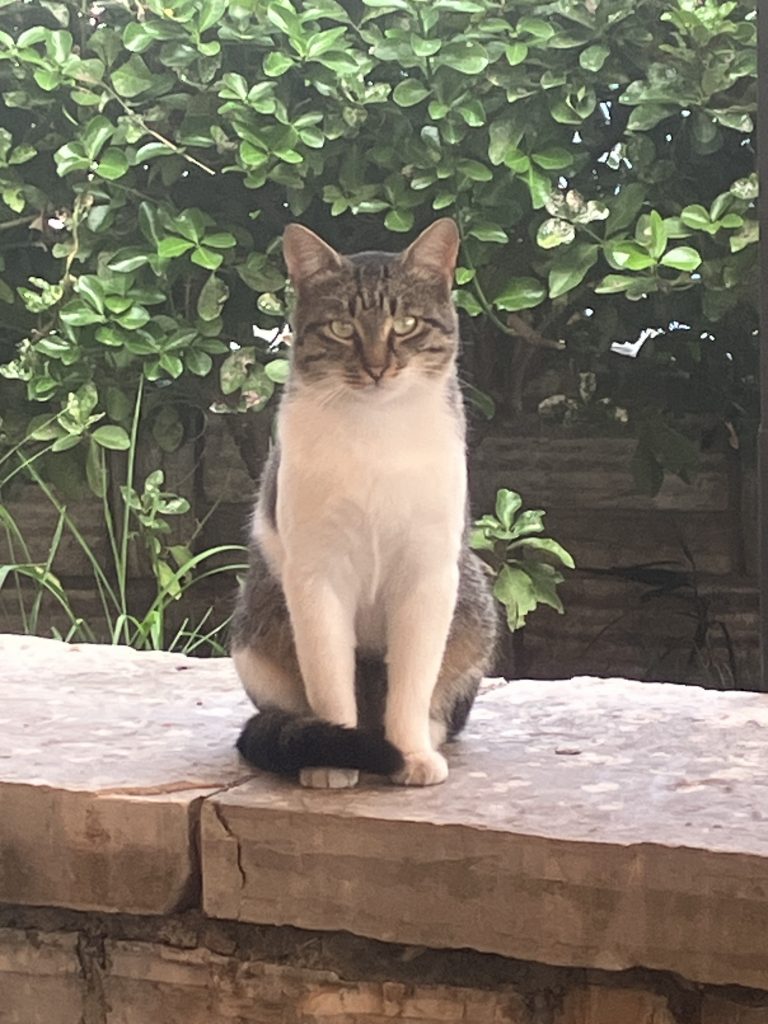
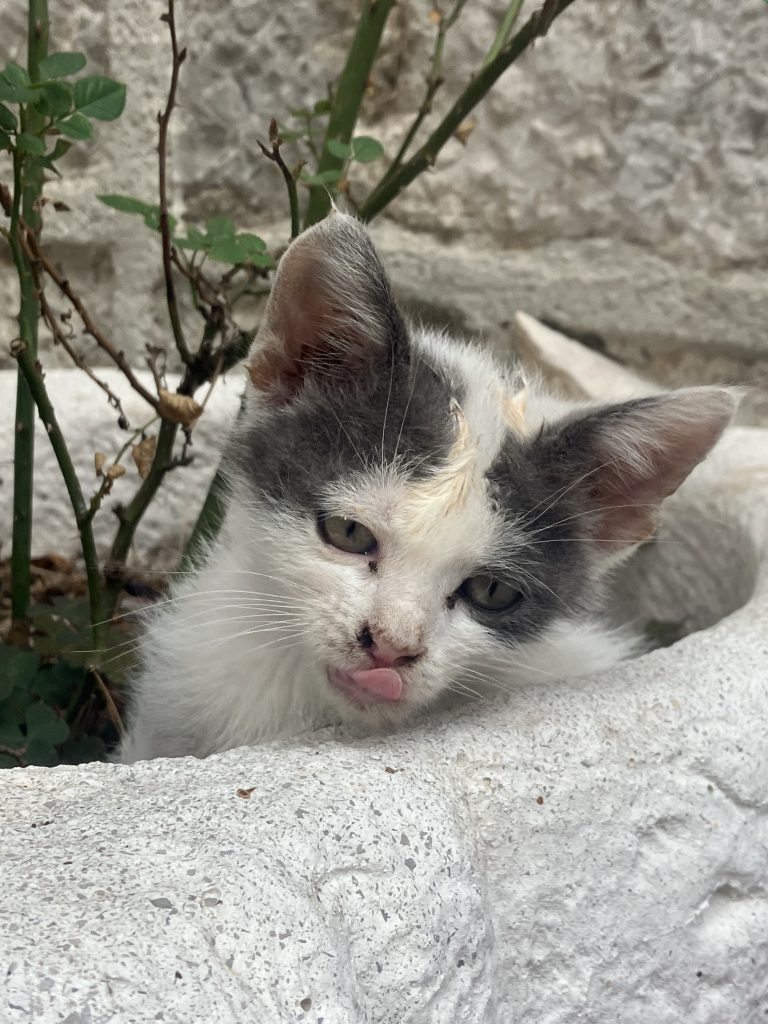
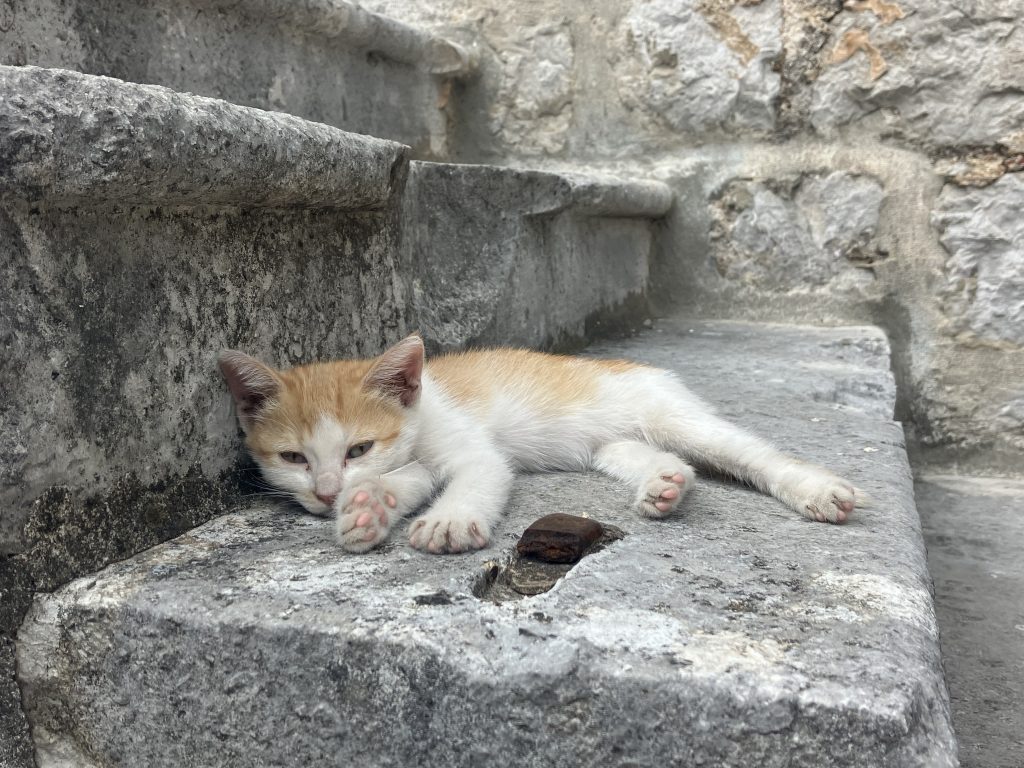
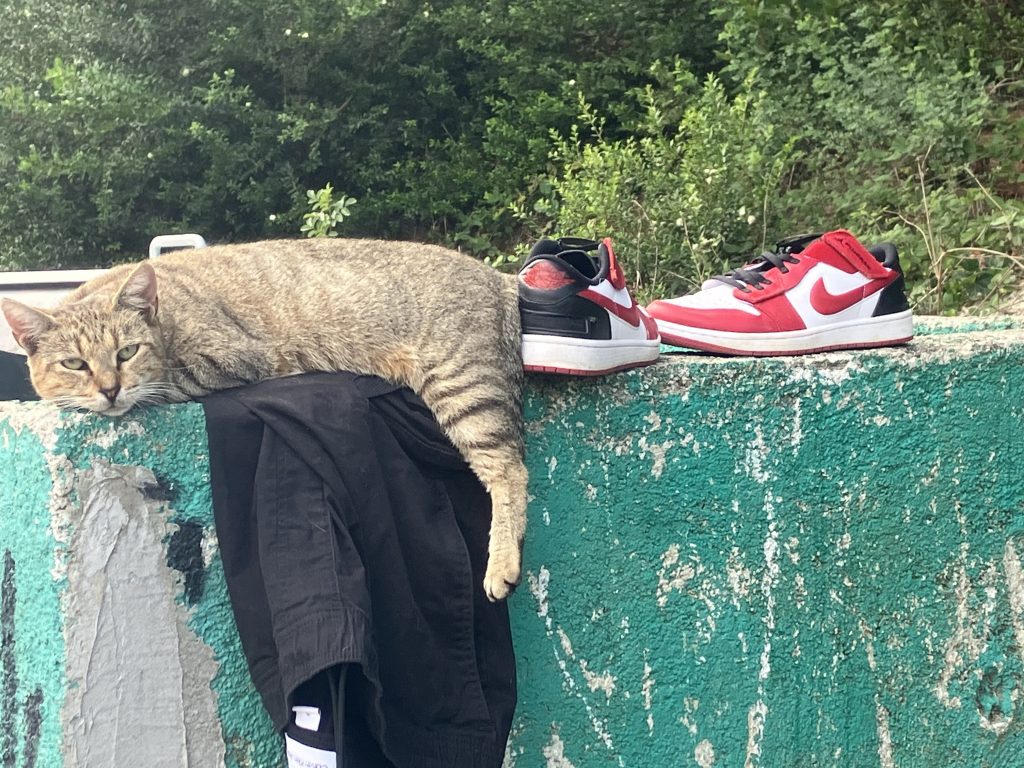
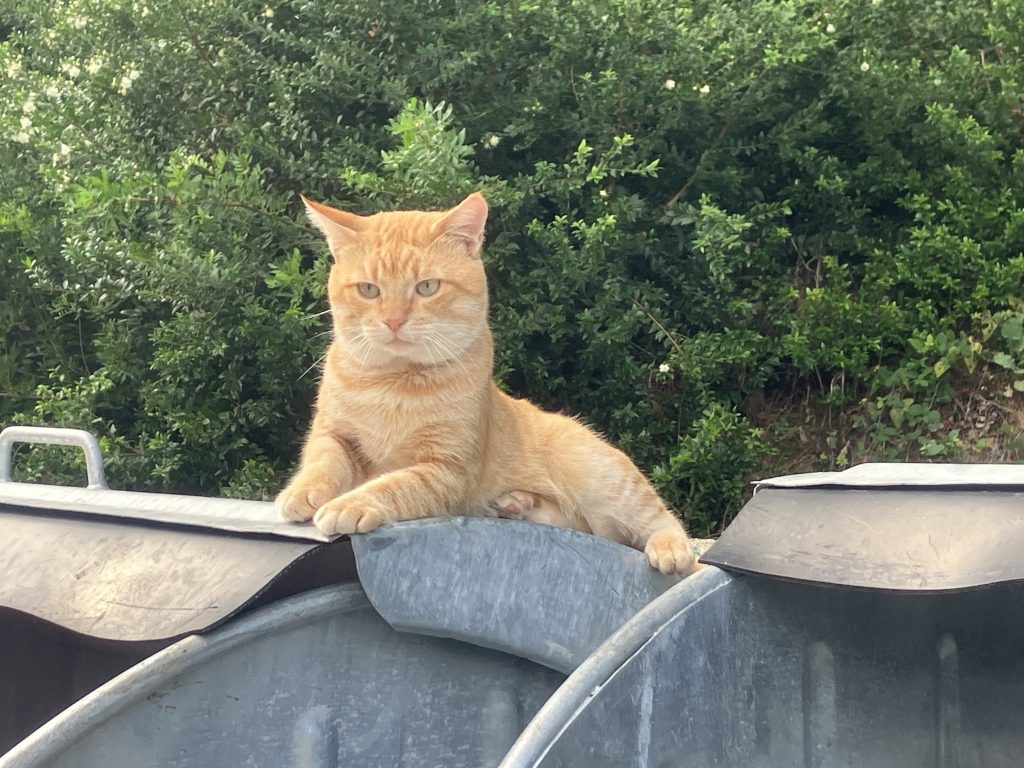
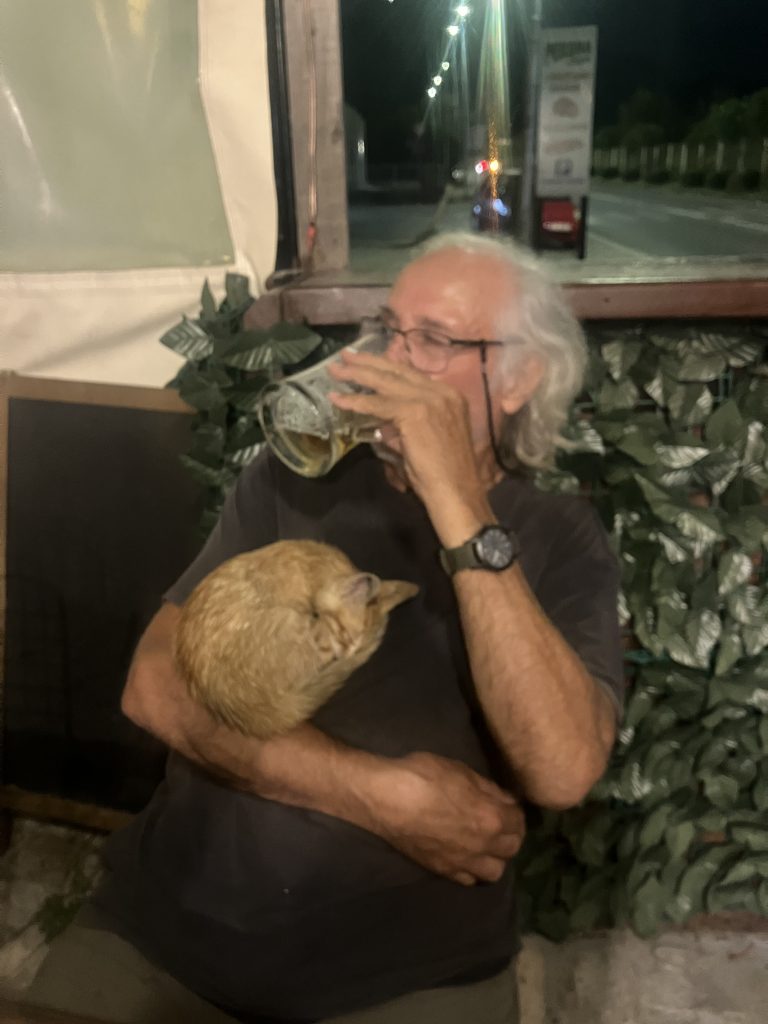
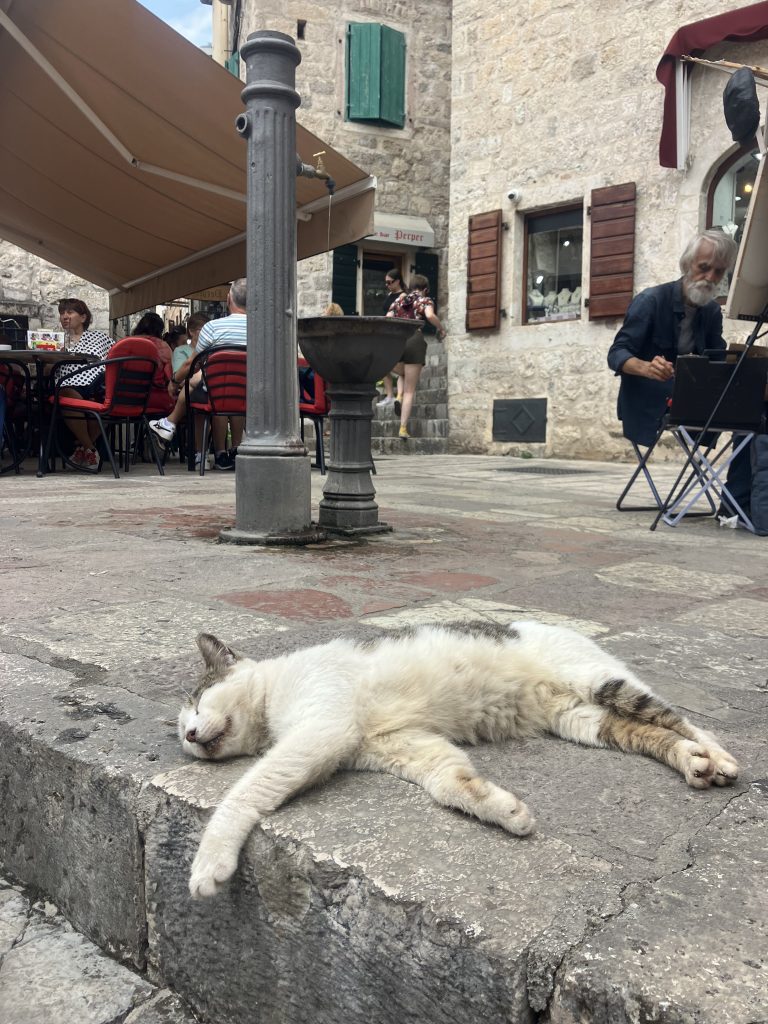
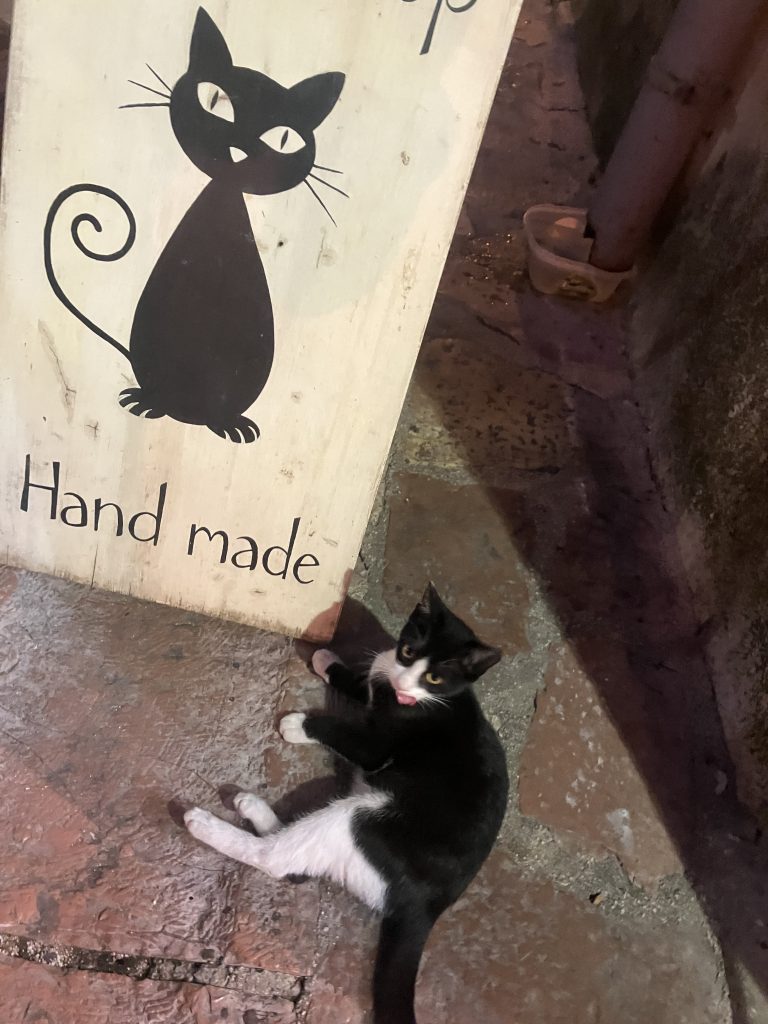
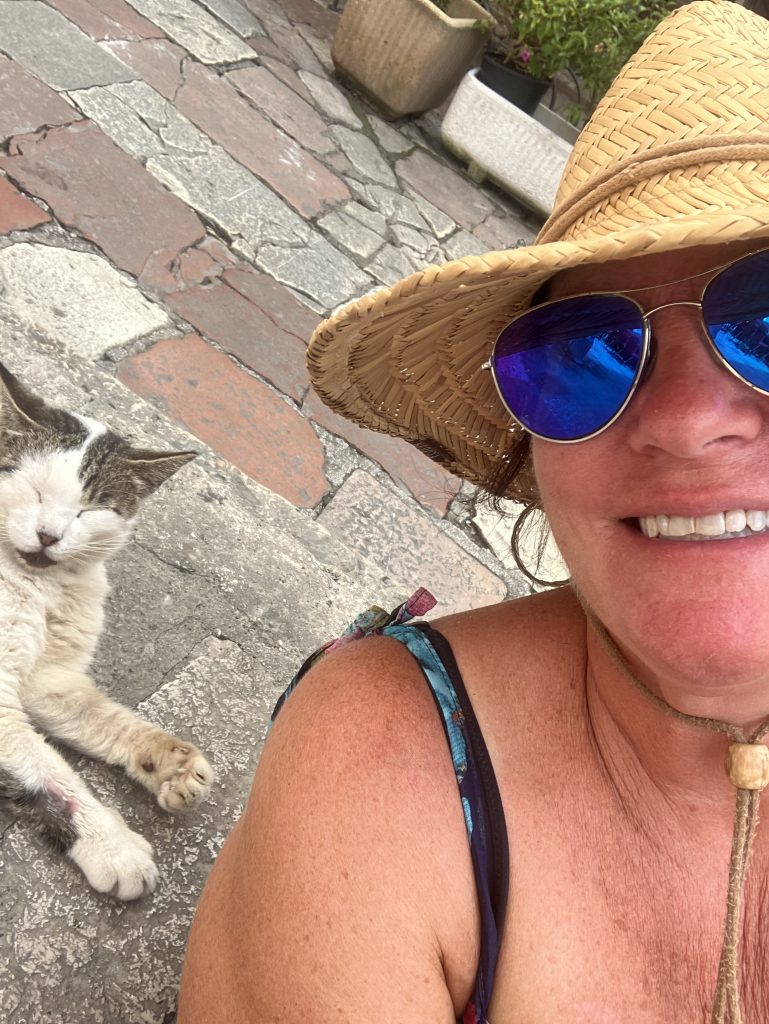
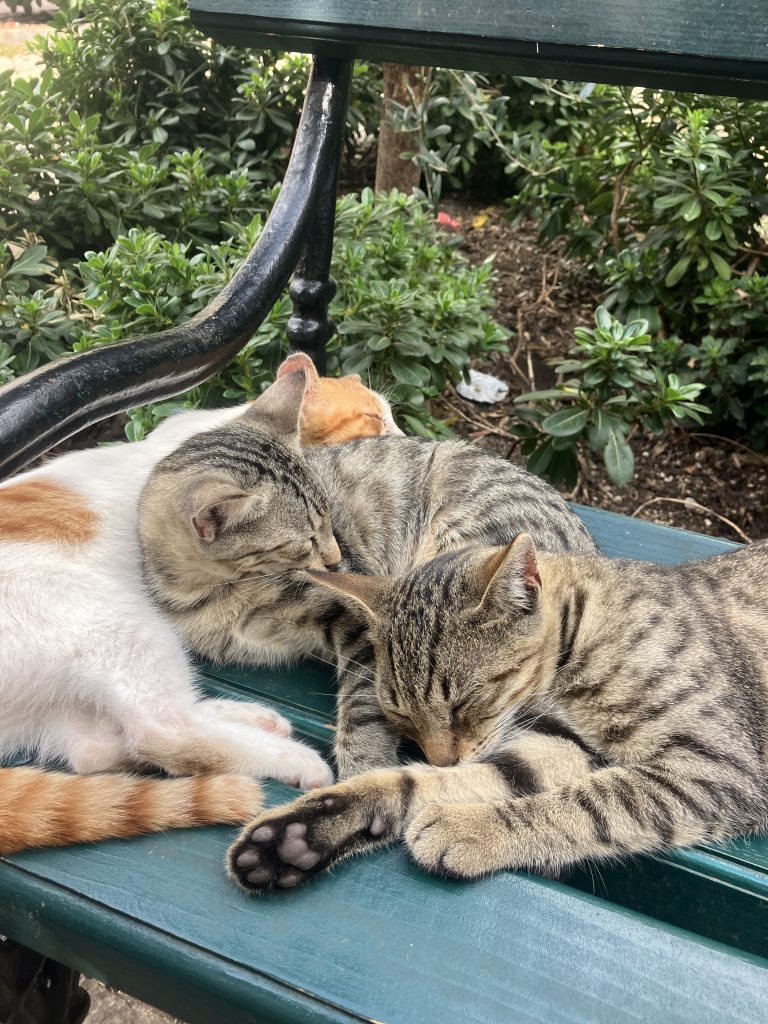
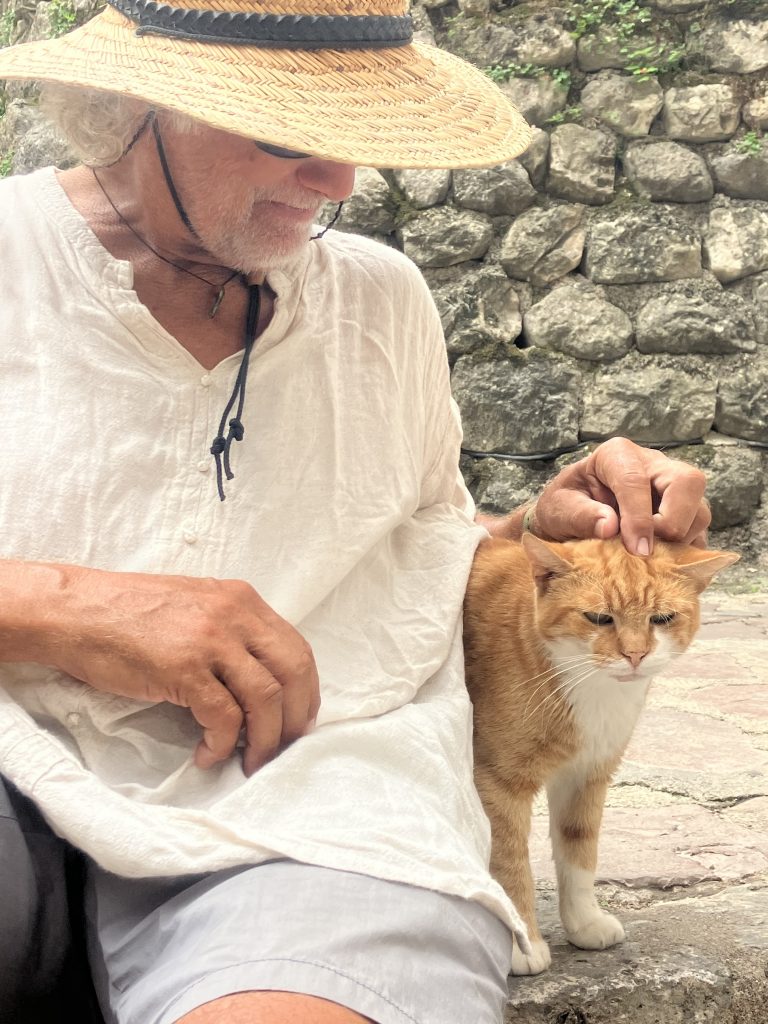
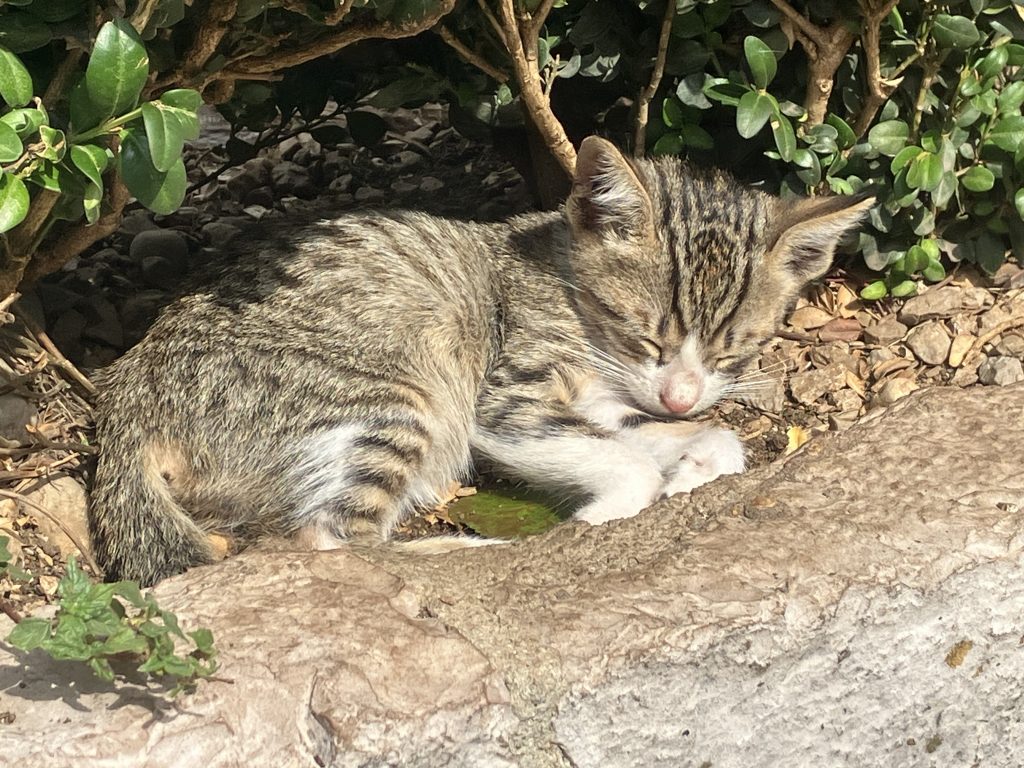












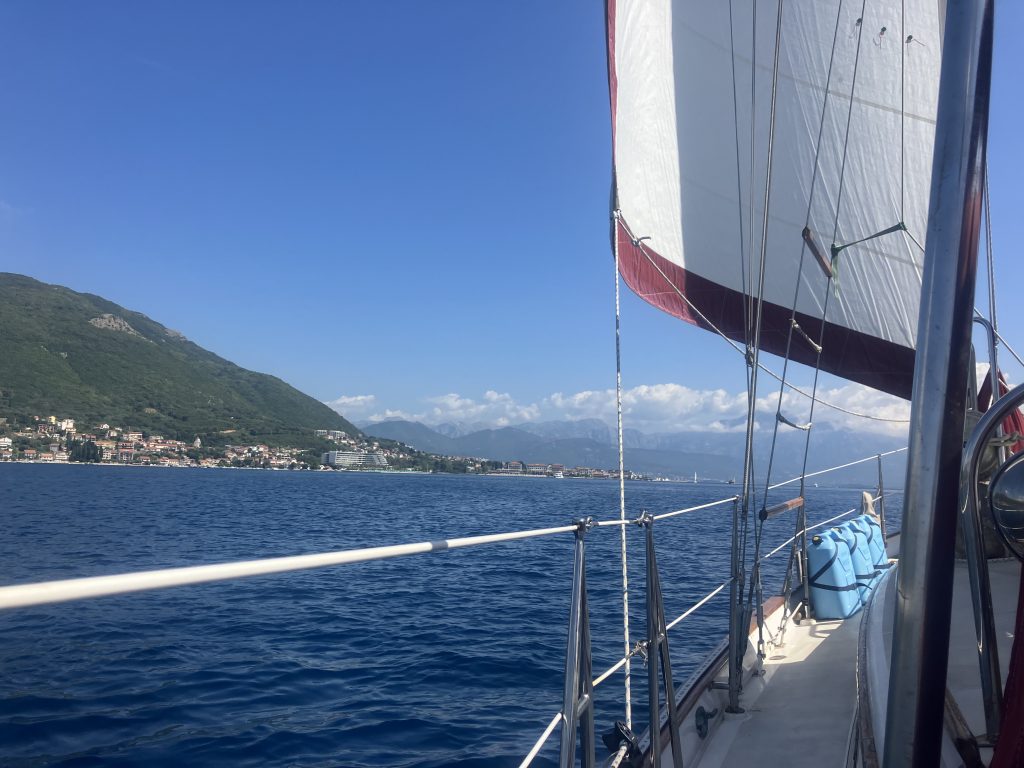
It was time to go explore what would be our new home this winter! After a quick visit from David and Gaile on s/v Topaz to sort out their new SIM card (there is nothing worse than not having internet access in a new country and the inability to get the new SIM card working), we upped anchor and headed down the bay. We were ghosting along under jib at 2 knots (we could have walked faster than the boat was moving), but the views were so breathtaking you didn’t want to go any faster.
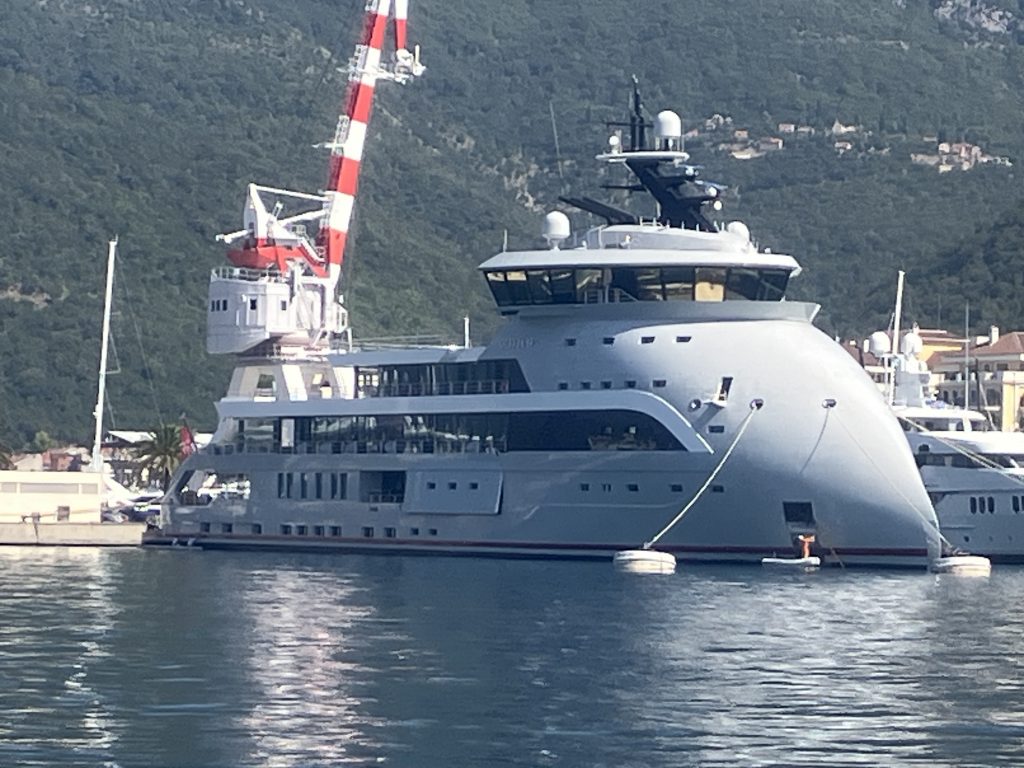
We dropped anchor just across from the famous sailing mega yacht Black Pearl and ogled all the yachts in Porto Montenegro. But it was hunger pains that drove us ashore first. We don’t care about waterfront views since we live on a boat, so with a little big of digging I found a local snack shop outside of town. We devoured the grilled chicken kebabs, freshly grilled pita, and sopped it all up in tzatziki that had been flavored with curry (?). A simple but memorable meal and we will definitely be back for more.
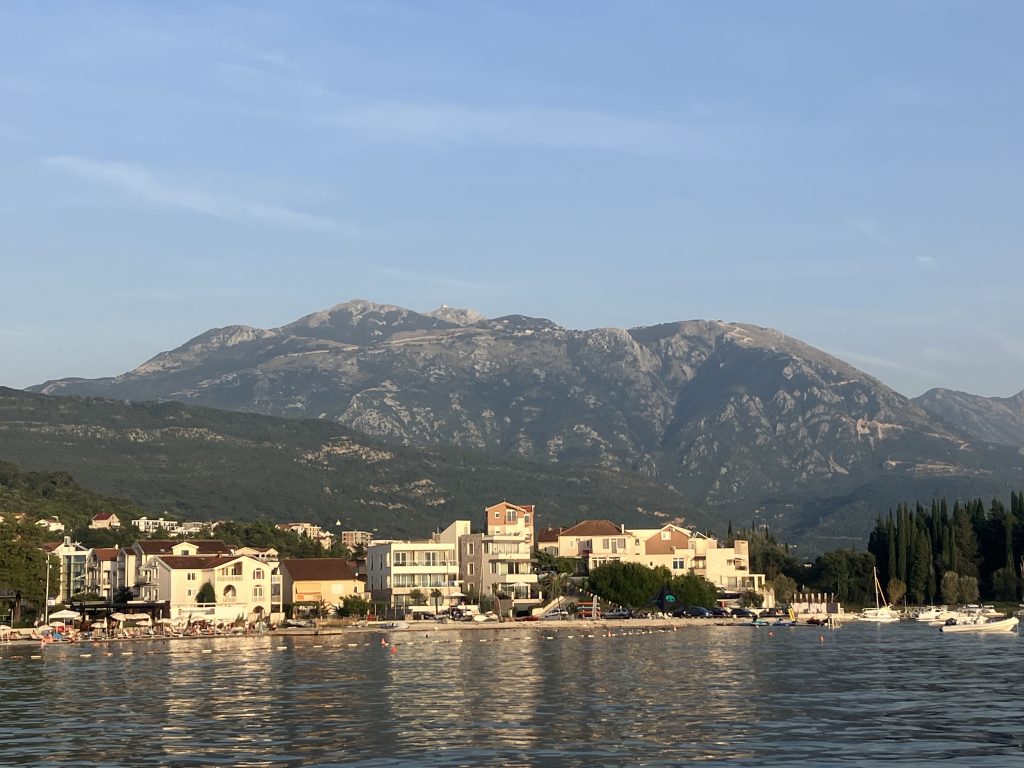
Stomachs filled, we walked back to inspect Porto Montenegro, where we would be staying for the winter. The place is beautiful, but ridiculously posh (acronym for Port Out Starboard Home – Brits traveling to India by ship knew how to order the cabins with the best views), and I laughed at my unbrushed hair and scruffy shorts as we walked around exploring. Trip went off to chat with the marina office, while George and I scouted out alternative anchorages (view of the Black Pearl aside, it was not a great place to be).
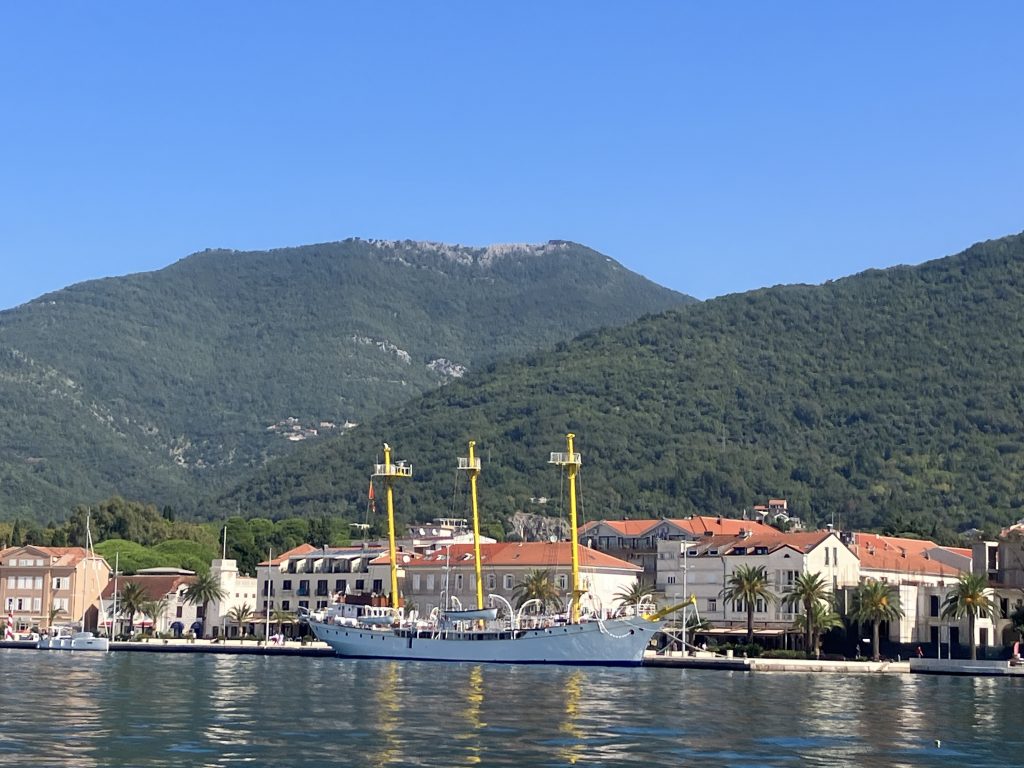
The next morning George called by radio as we were eating breakfast. He had gone to up anchor and had snagged some part of an unused mooring chain. The water was too murky and deep to do much, so we grabbed our dive gear and headed over. George suited up, and had the anchor freed in just a few minutes. Without further ado, we both headed over to the anchorage in front of town. We hadn’t picked this spot earlier as local postings had reported that anchoring was forbidden, but there were ten-plus boats currently anchored there, so we assumed, right or wrong, that it was probably okay.
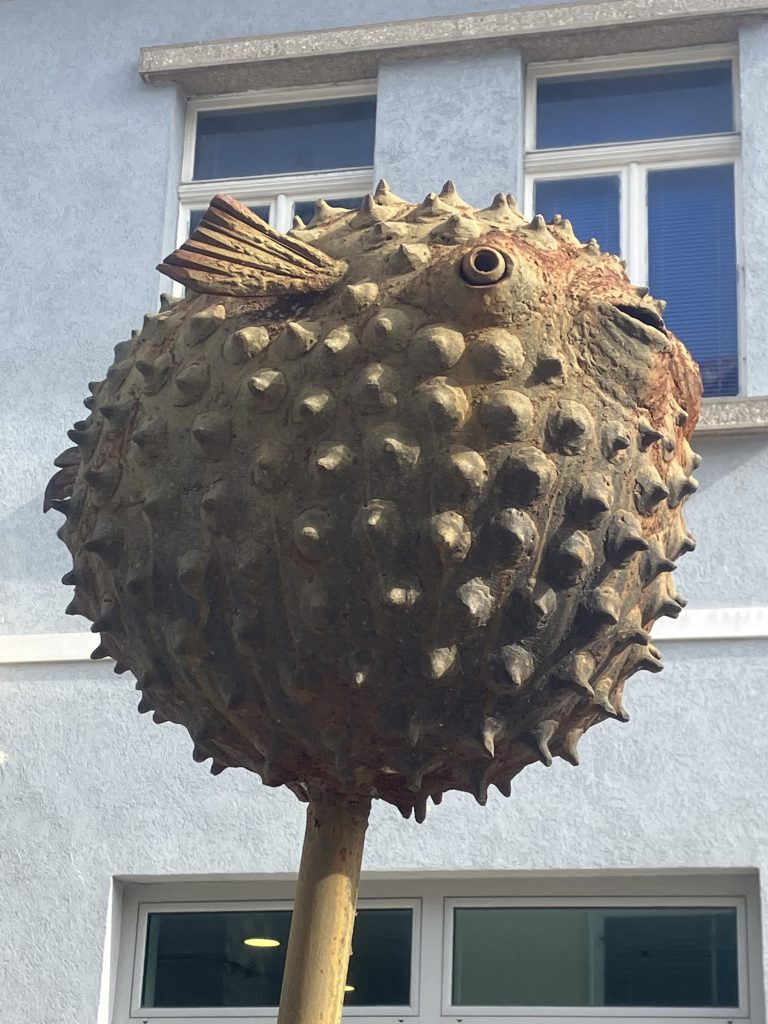
Once settled, Trip took the dinghy over to the Navar boat yard to make arrangements for our haul out, while George and I went back to town to look for a canvas maker for him and to do some more provisioning. Everyone was successful, and it was time to enjoy the sunset before George treated us to a lovely dinner at Babi for helping to rescue his boat.
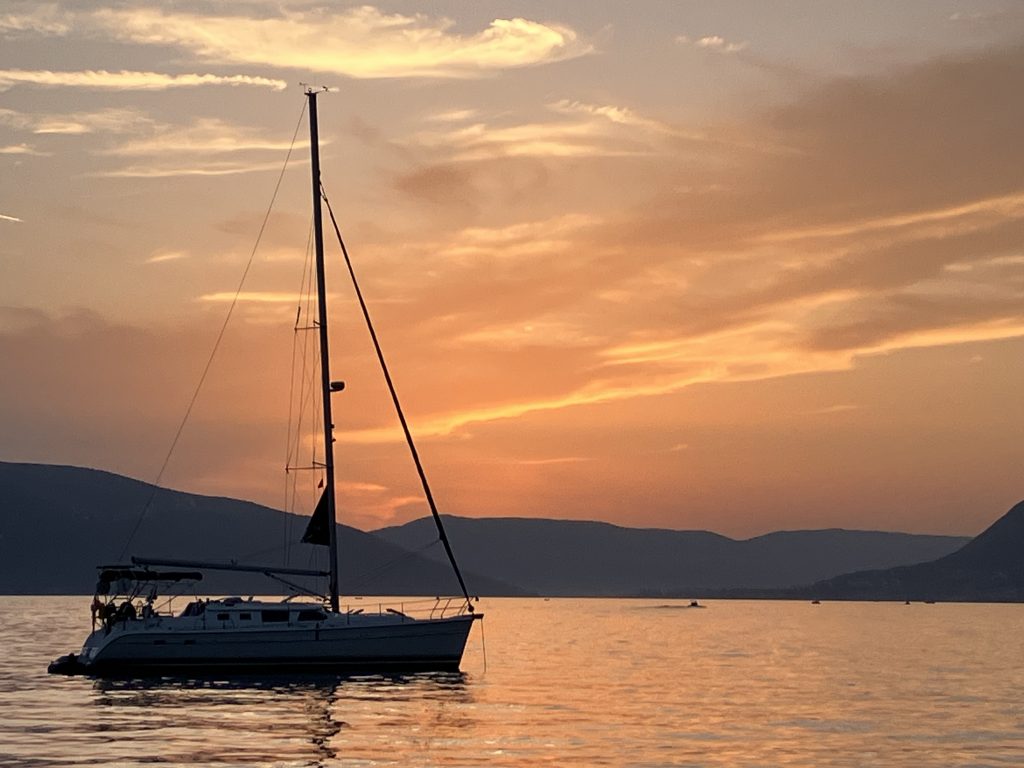
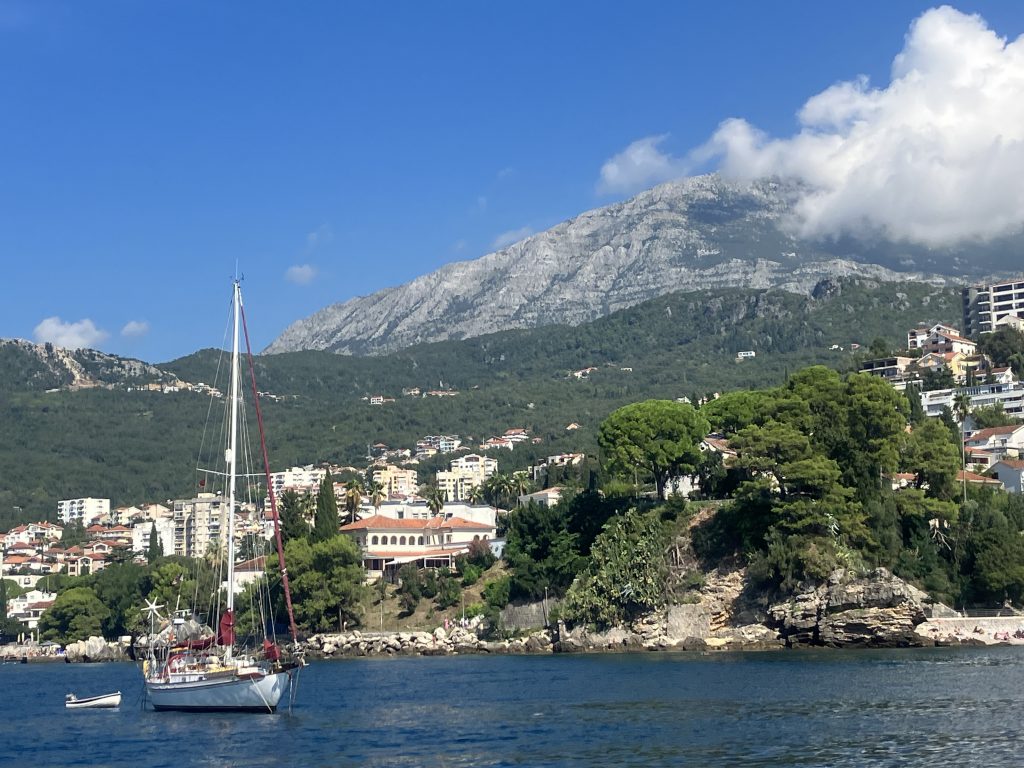
After all our worries about clearing into Montenegro, our agent met us at the dock, collected our passports, and was back in ten minutes with the stamped & signed paperwork. Ten minutes after that I had a Montenegro SIM card for internet access (1 TB data for only 30 €!). We headed west, two nautical miles to Herceg Novi, dropped the anchor, napped, and waited for George to arrive.
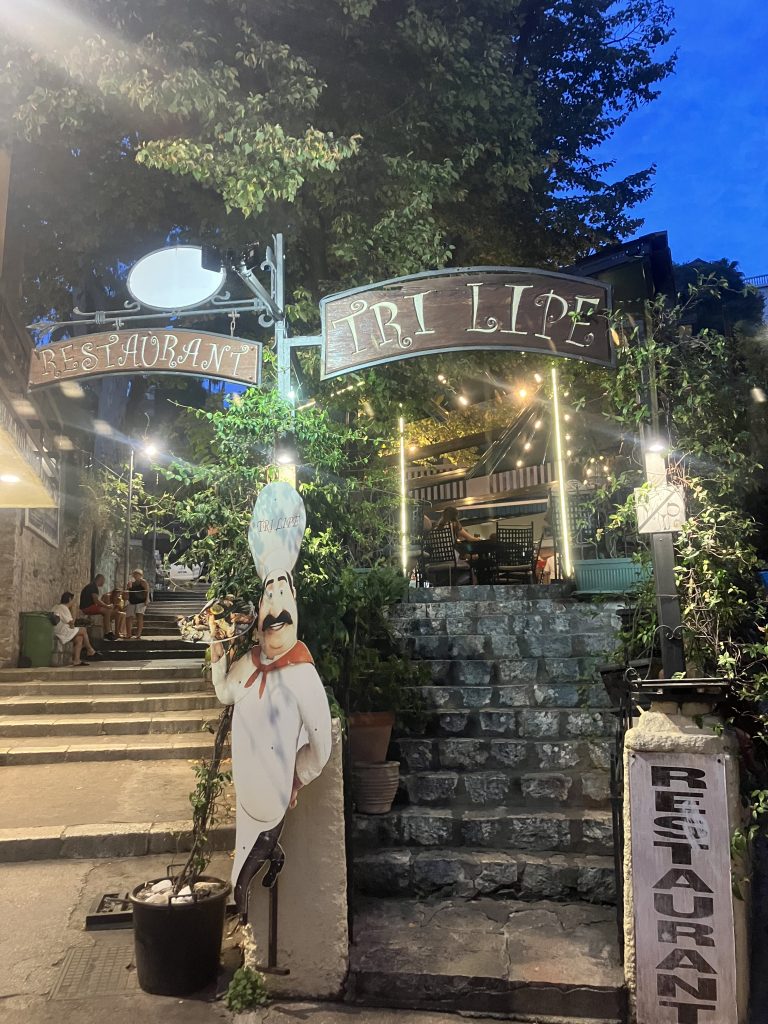
Our first dinner was at a great, locals restaurant called Tri Lipe. Lots of meat, lots of roasted veggies, lots of beer, great service, (and a little mediocre wine).
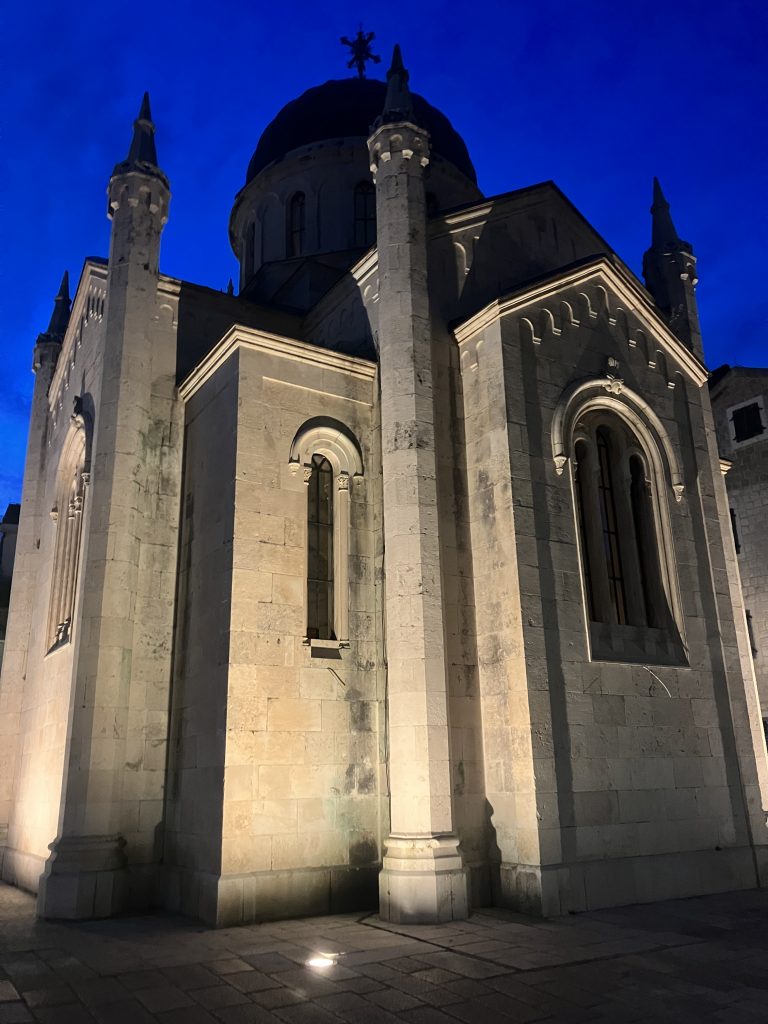
We wandered up the steps to the old town, which was not very busy (this is the end of the season), but beautifully lit up at night.
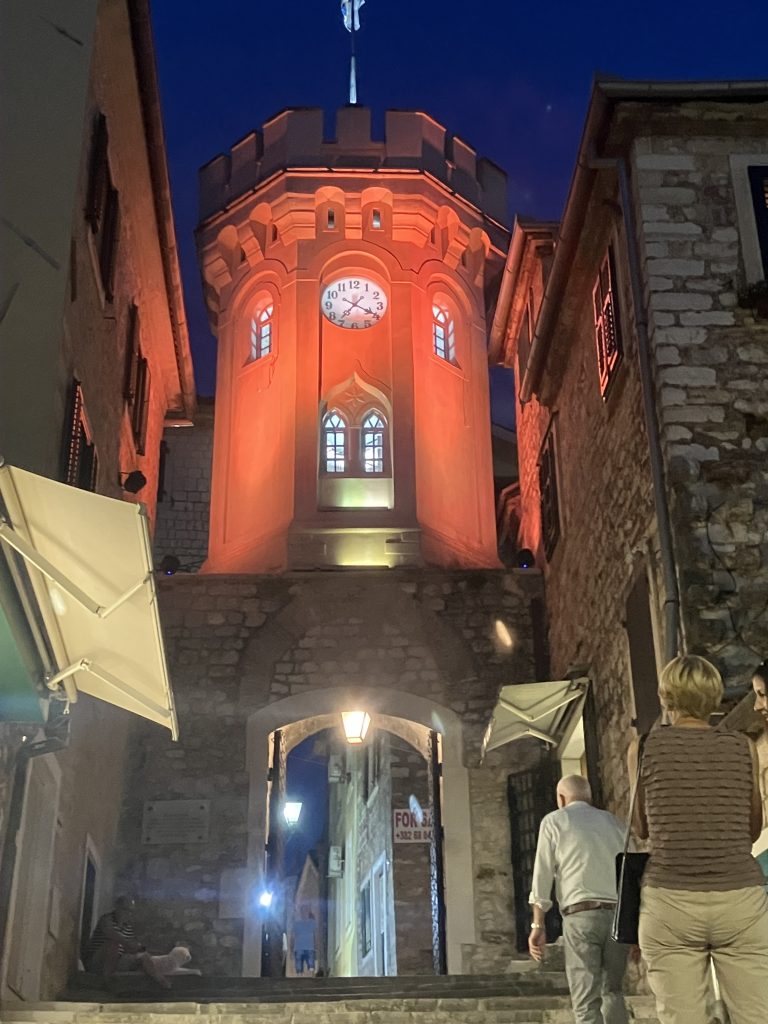
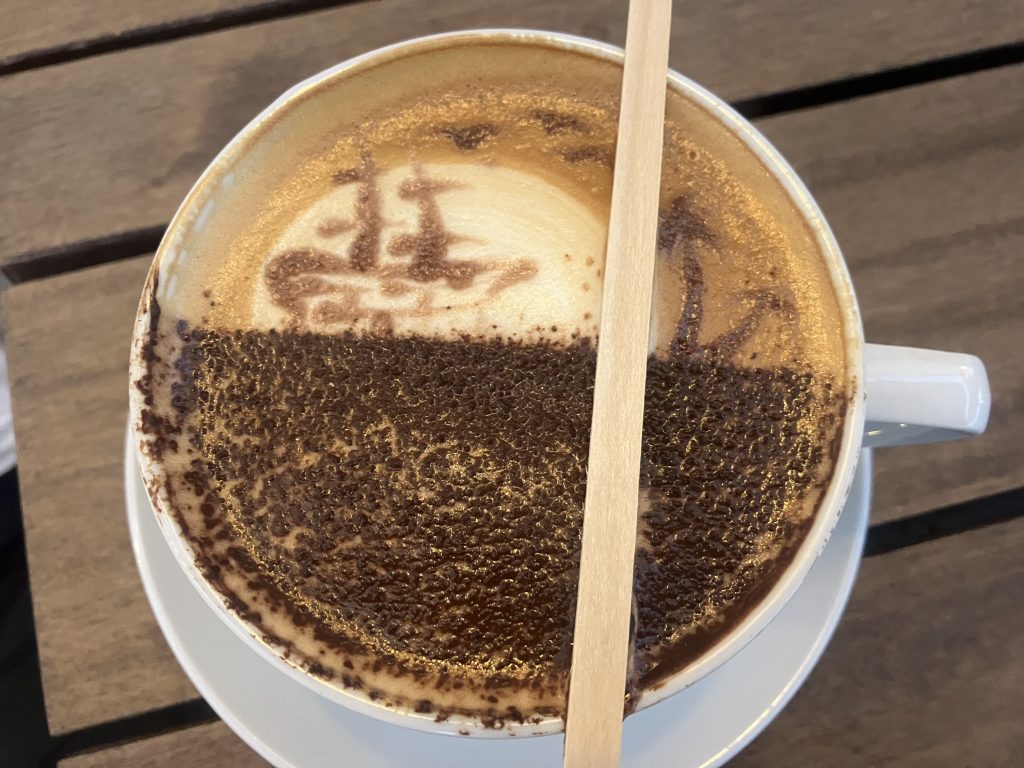
Unfortunately we wasted most of the next day motoring down to Porto Novi. The port of Zelenika could issue our crew list and cruising vignette (permit), but had no one to collect the tourist tax. By the time we moved, anchored, waited for the anchor to set, and then find the correct office, she had left for the day. So it was back to Herceg Novi and a wait for Monday (government offices closed on Sunday).
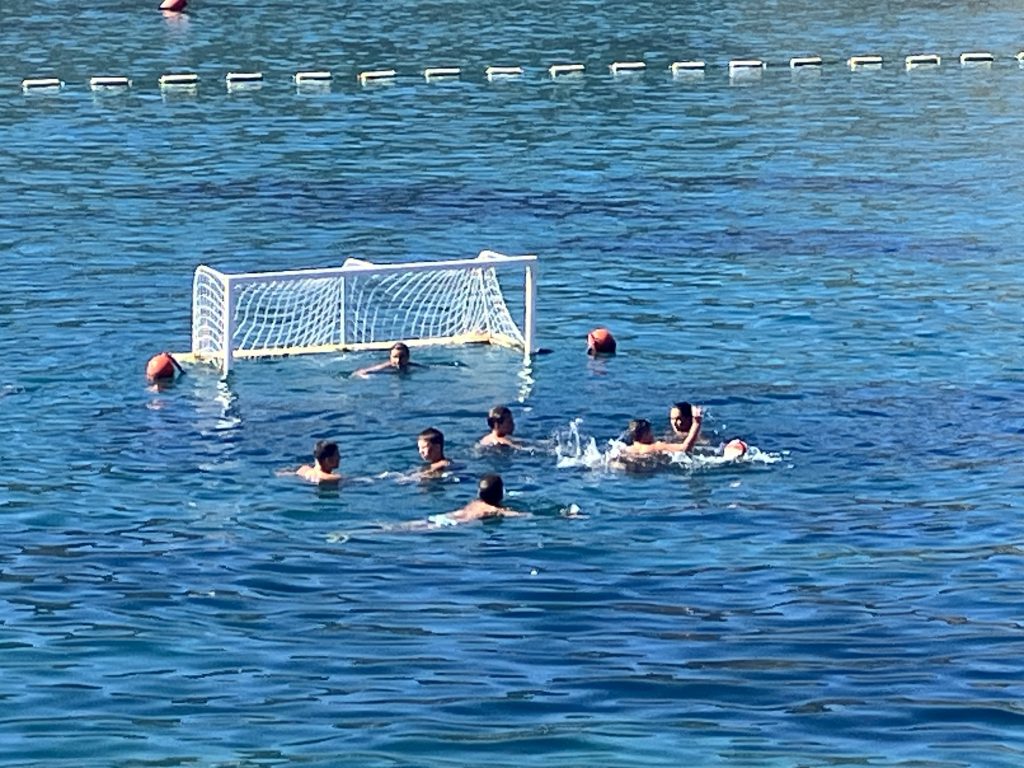
Sunday morning we took a stroll down the promenade to Oliga. We passed a group of teenagers playing water polo (they have a water polo stadium down the road), and just enjoyed seeing all the locals out for a Sunday at the beach. Many people were lying in the sun covered in mud, enjoying the spa treatment.
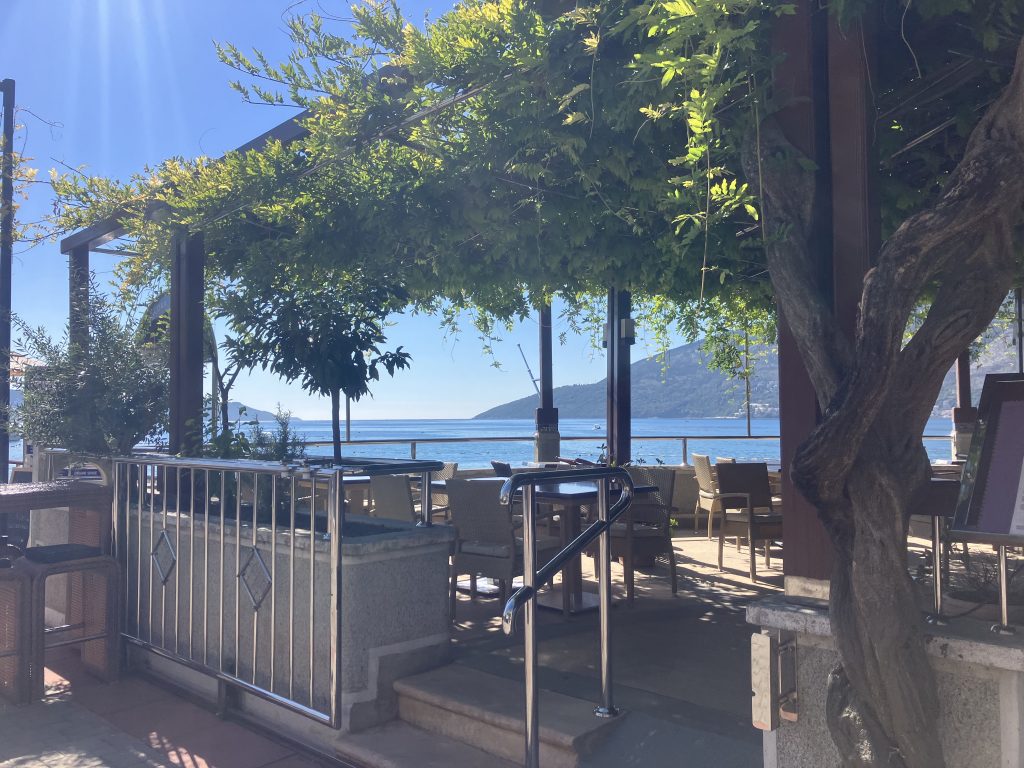
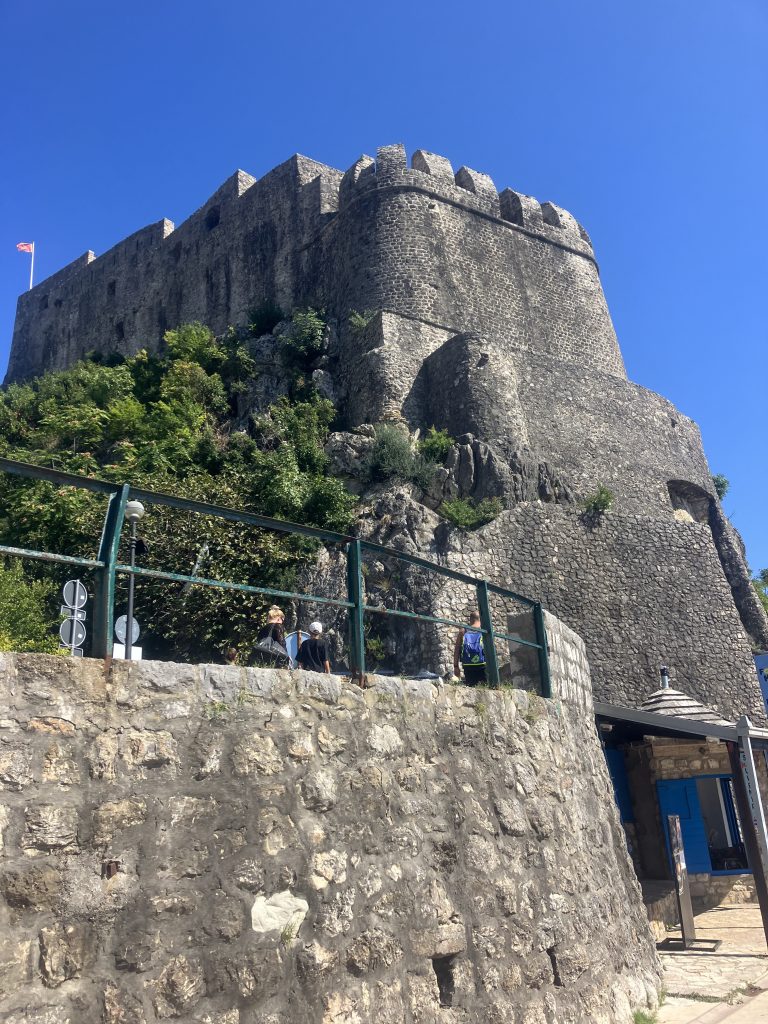
George met us back in town, and we hiked up through the old town to the Kanli Kula, the Bloody Fortress.
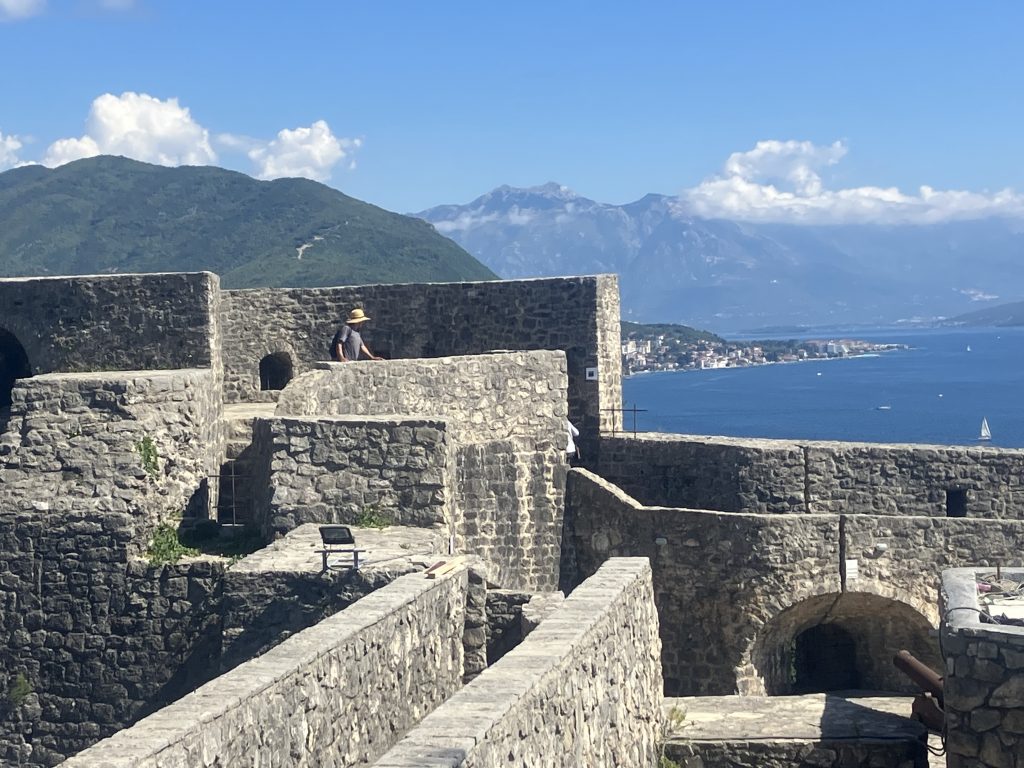
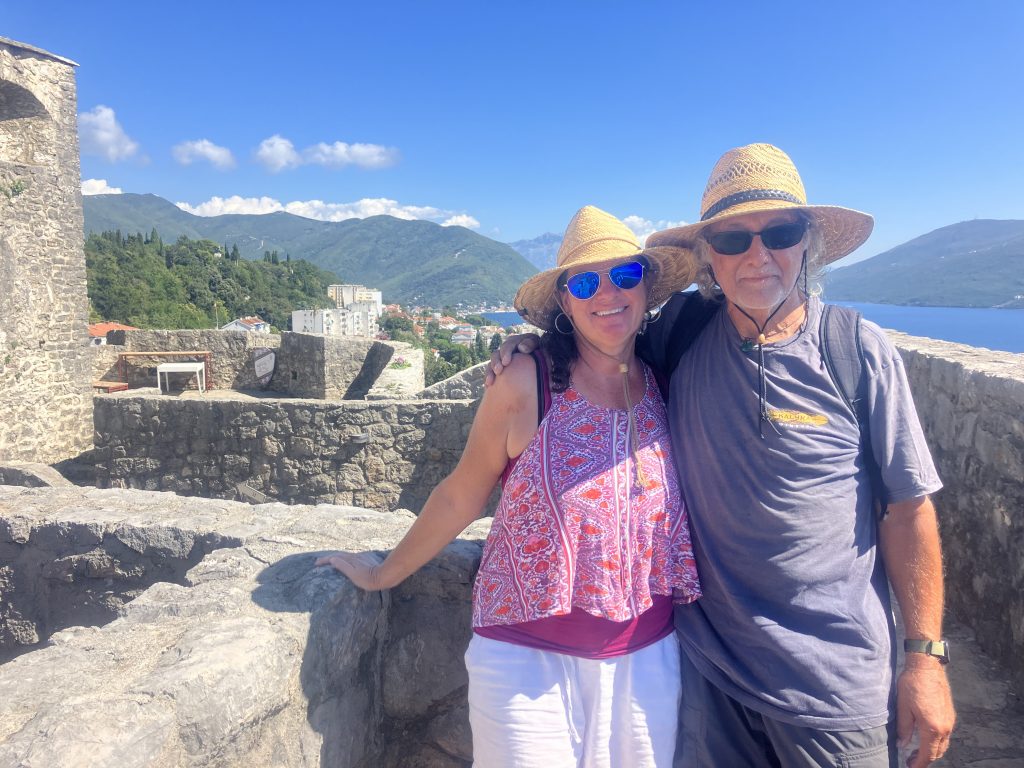
Built in the 16th century as part of the Ottoman Empire, it served as a fortress, a prison, and (nowadays) an open air theatre.
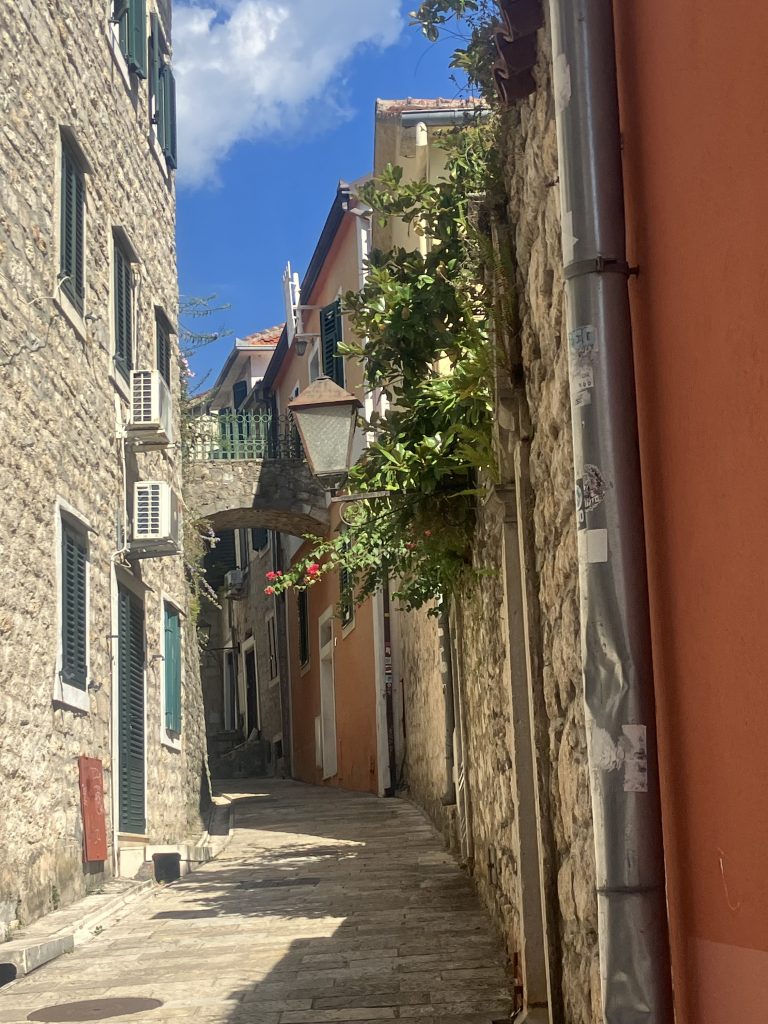
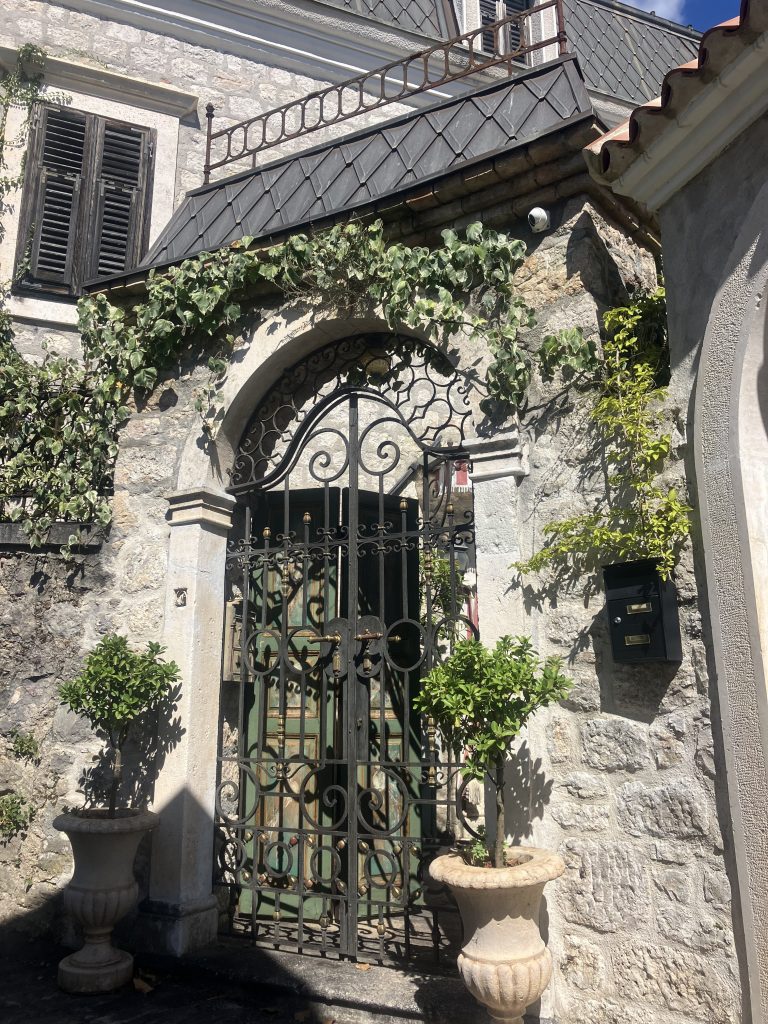
We explored the fortress, stopped for lunch in the square, then in was back to the boat to rest a bit. George had invited us over for movie night, I offered to make dinner, and it was another peaceful night in Herceg Novi.
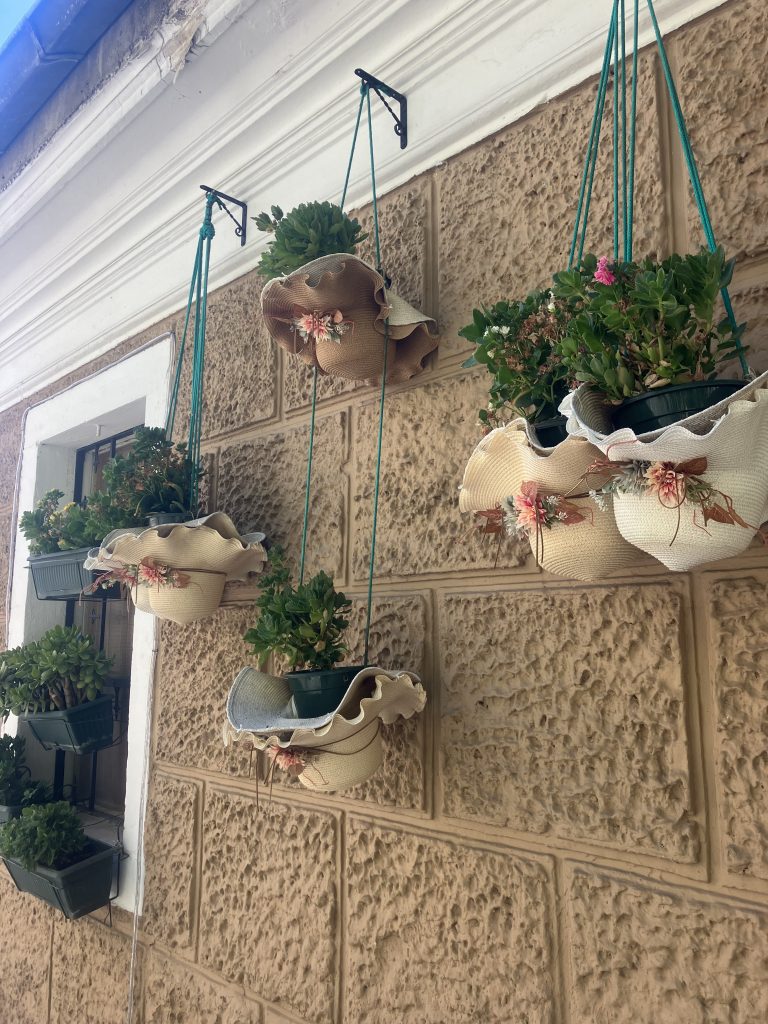
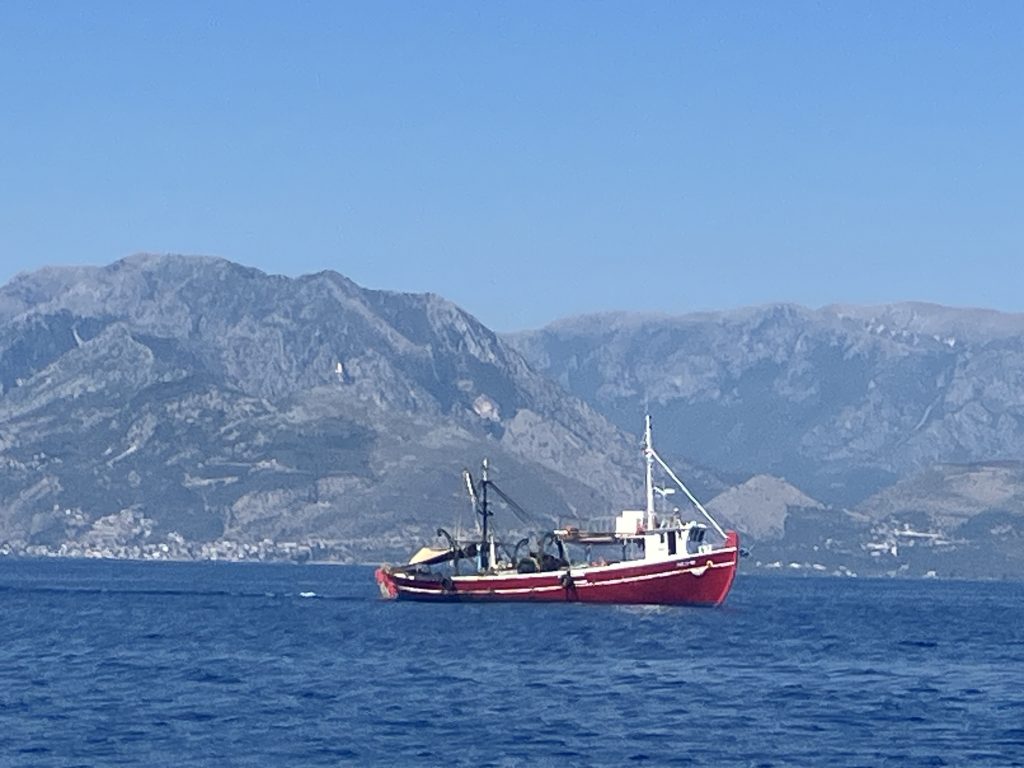
Having to alter our plan for this season to leisurely hop up the Albanian coast, we now planned to jump from Sarande to Zelenika, Montenegro in two stages. 105 nautical miles to Durres, and then 80 nautical miles to Zelenika. We don’t like entering unfamiliar ports at night, and our limited motoring speed combined with shortened daylight hours meant we couldn’t do either trip during the day. So two overnights it was. We popped over to Balena to say goodbye to Gerret and Katrin, and then stopped by Panic Major to say goodbye to Johan and a Jenny. It truly felt strange leaving those two as we had been boat neighbors for the entire time in Sarande and had enjoyed many an evening on each others boat over cocktails.
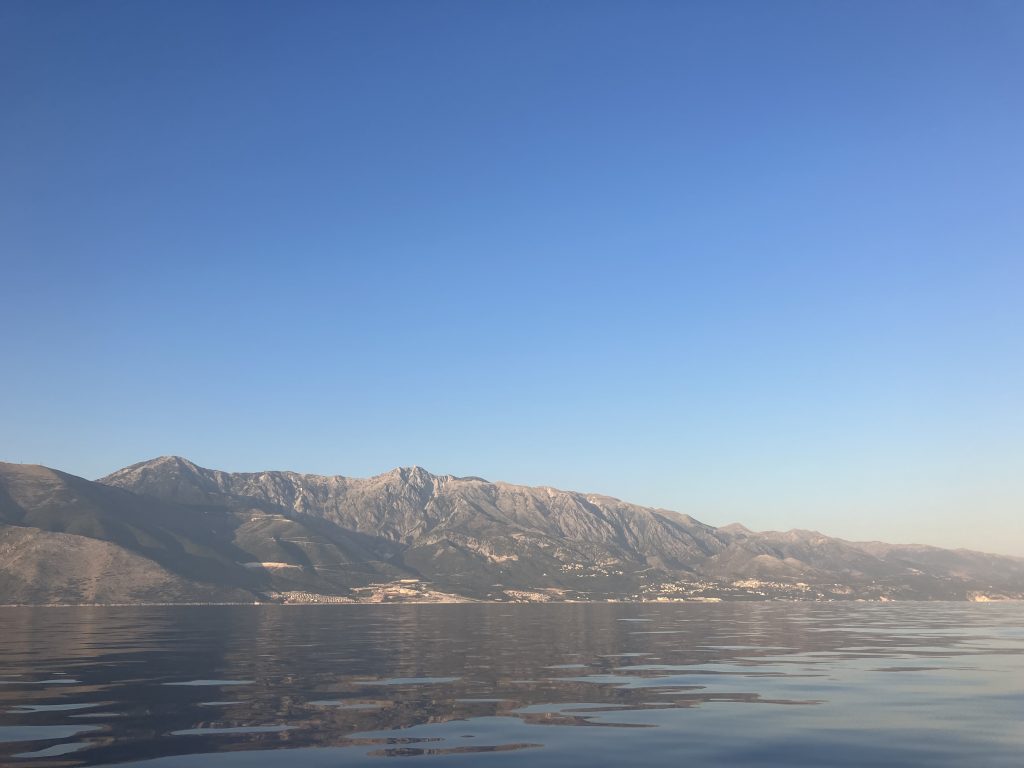
Of course the forecasted winds never fell into place, so it was a motor slog, but at least it was comfortable. We passed by the mountains of Himare and made a note to return in the spring on our passage south next year. We were able to put out our jib and at least sail part of the time. The next morning we pulled into Durres and dropped anchor next to George on Juventa, who had been a boat neighbor for a few days in Sarande. We made arrangements to clear out together. Of course our dinghy outboard still wasn’t working, so George kindly put his outboard on our dinghy and we headed into town.
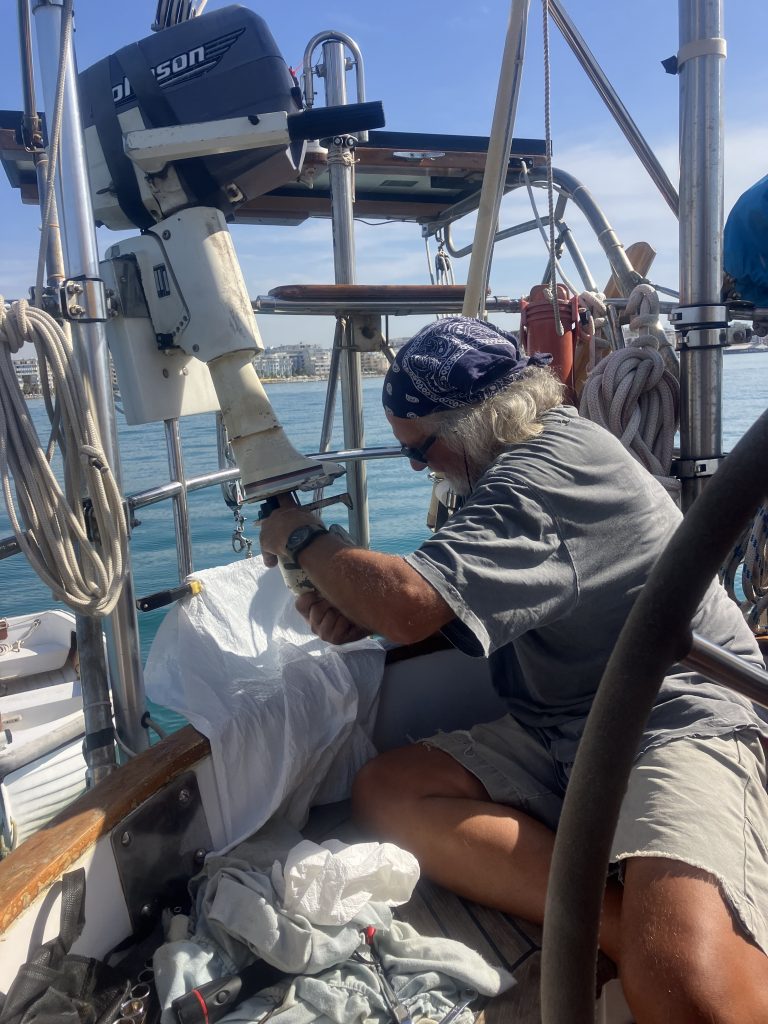
Our agent, Llir, met us at the dock and dropped us off at a local restaurant for lunch while he handled the paperwork. I highly recommend the clay pot with baked lamb and yoghurt! We walked back to the port and Llir took Trip by car to fill a couple of jerrycans with fuel, just to make sure we had enough to get all the way. When they came back, the four of us sat over a final beer and Llir talked about the relationships between Albania and different countries over the years – it was quite the history lesson. Albania is still struggling to catch up in tourism infrastructure after so many decades of isolation. A $2.5 billion contract has been signed to transform Durres into the largest (super yachts and all) marina in the Mediterranean. I’m happy to know that they will get their share of visitors, but I worry about a super yacht marina being dropped into a country that is still experiencing so much poverty and is rife with corruption. Regardless, I feel privileged to be visiting at a time like this.
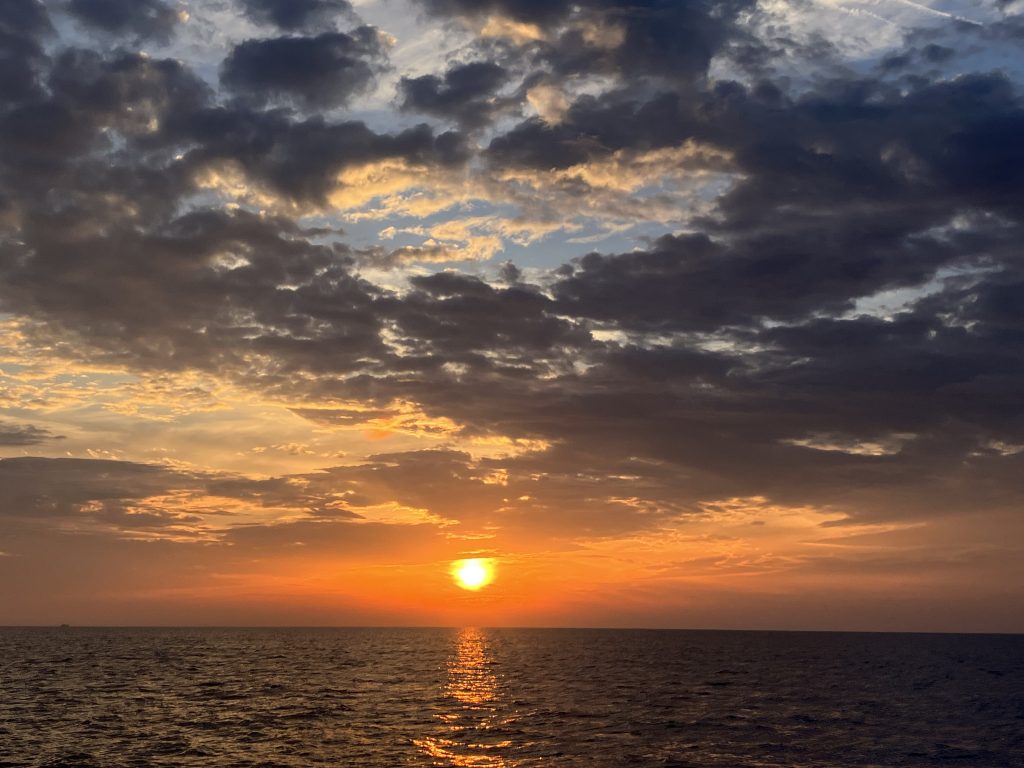
Trip finally got the dinghy outboard reassembled properly, and we were off again. Did I mention the lack of wind? It was another motor slog up to Montenegro. We were approaching well ahead of our scheduled arrival, and there was a faint breeze, so Trip killed the engine and we ghosted along at 2.5 knots under jib for a few hours. The mountains of Montenegro became visible as the sun rose and we were on our way to the last country of this season.
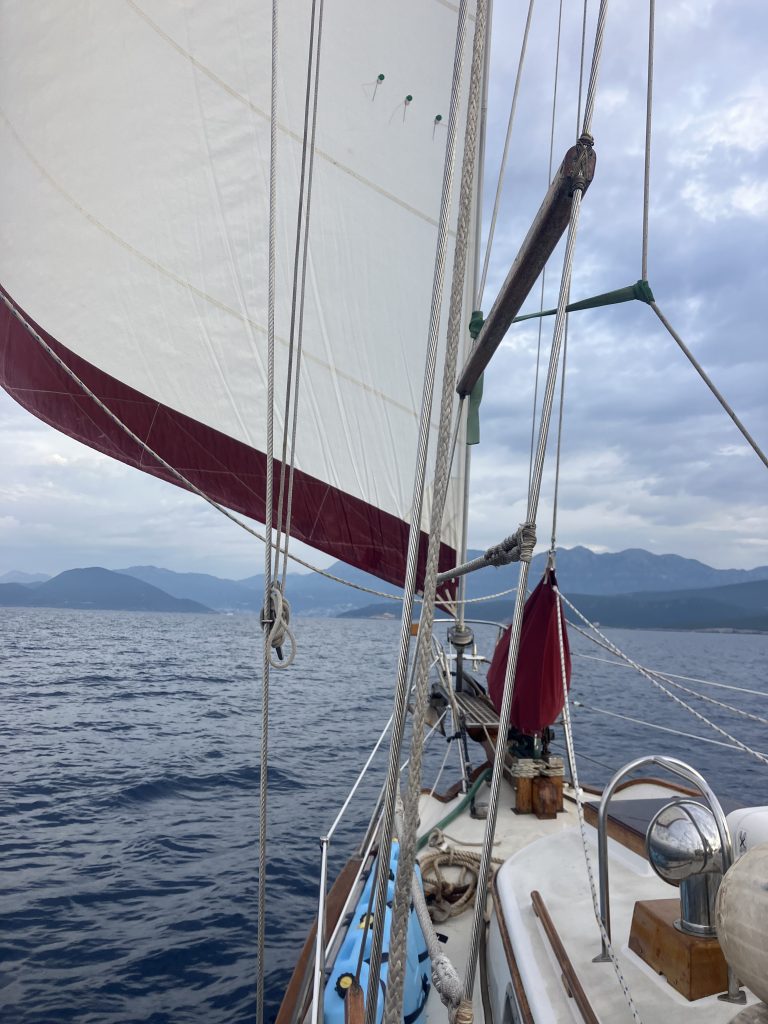
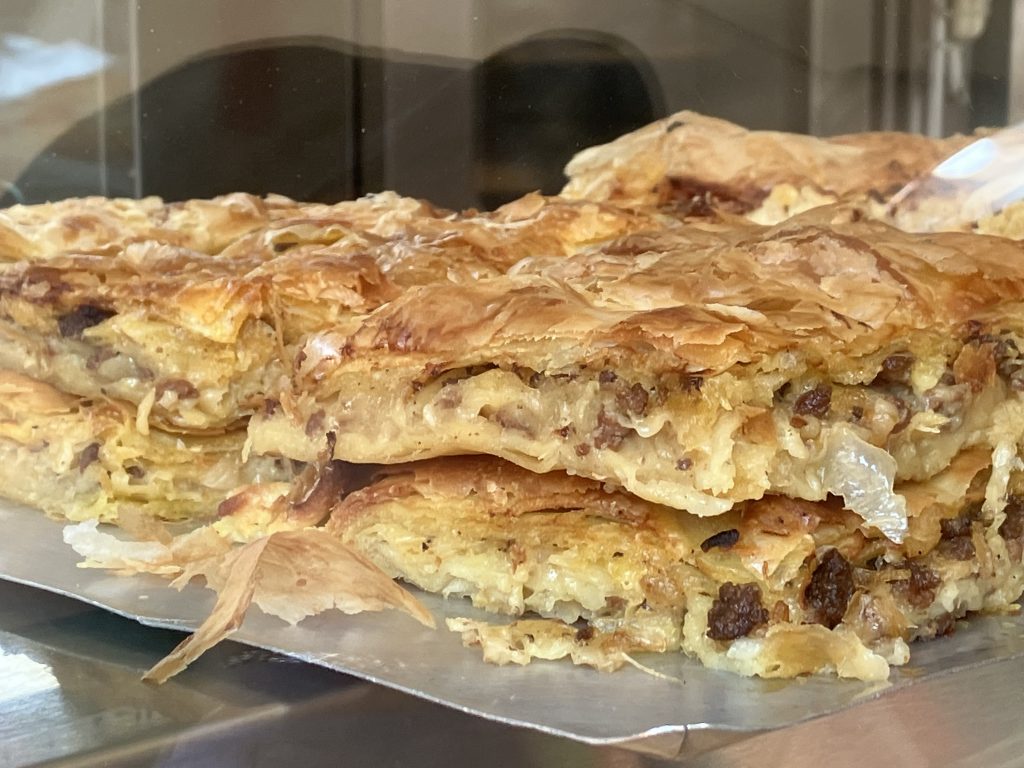
We never planned on staying in Sarande, Albania for four weeks, and yet, there we were. We arrived after that long lumpy passage from Sicily, and the first week was spent recovering, socializing with neighboring boats, and visiting the local sites. The second week involved a lot of back and forth with authorities and agents in Montenegro to resolve cruising permits before we entered those foreign waters. The third week winds weren’t quite favorable, and the boat suddenly required alot of attention. Then the vicious storm Daniel hit Greece, Turkey, and Libya (where tens of thousands of people died in floods) and kept us pinned as the storm kept sucking the winds down from the north. We later learned about the weather condition called an Omega block, consisting of two low pressure systems pinning a center high pressure system and remaining stationary (picture the Greek letter omega).
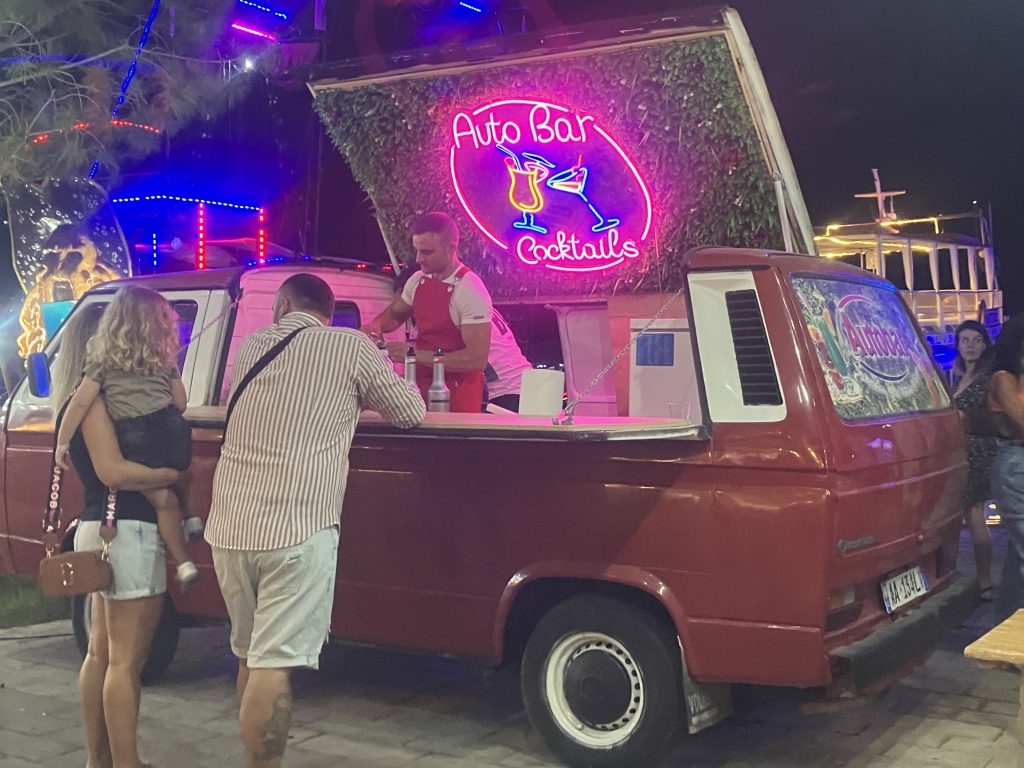
As frustrating as it was, it meant we stayed for the local beer festival, and heard two absolutely fabulous musical artists. The first was Xhesika Polo, a young star from Albania who made it as far as the final three on Albania’s version of American Idol. Her music was great, and her covers had the crowds dancing everywhere. She performed a wonderful medley in tribute to Tina Turner. She had everyone singing along to ‘Bella Ciao’. Then she started with traditional Albanian songs and the crowd transformed. A serpentine-like line formed, the leader waving a white scarf. This was the Napoloni. With timed steps, the line zigged and zagged amongst each other as more and more people joined. We didn’t have the footwork to participate, but sat back and watched as hundreds of people danced and sang the night away. The following night we were treated to Gipsy Groove, a ska band from Kosovo. Very very different from Xhesika, but once again, so fun to dance to. I’m really hoping we might see both again some time this winter while we’re in this part of the Med.
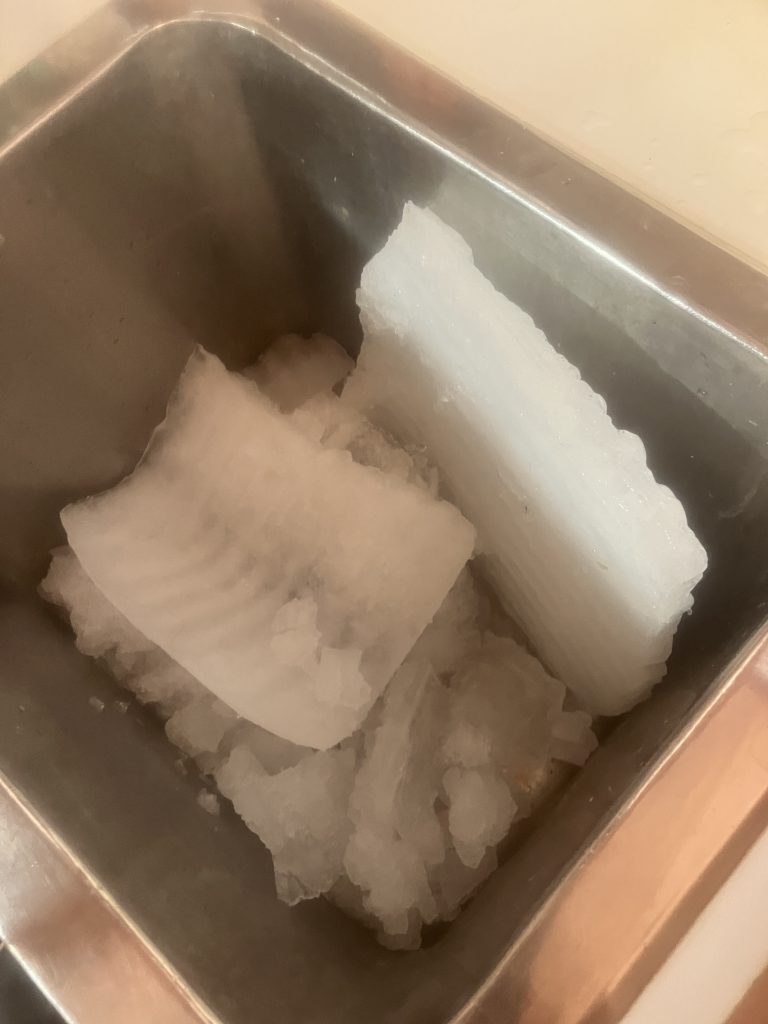
Unfortunately our luck from this season started to run out and the boat started acting up. The wind generator stopped performing, and with shorter days we get less from the solar panel. Combine that with a fridge that was spiking in its draw, our new batteries weren’t keeping up and we had to run the engine periodically. We defrosted the fridge (a LOT of ice had built up), took some refrigerant out of the system, and rebooted everything – this seems to be working. Our propane is getting precariously low (the stops along the Med where we thought we could refill the tanks didn’t pan out), so we bought a small stovetop, stand-alone burner along with some small tanks to get us through the season. The woodwork on the boat had taken a beating, so we did some varnish work to tide us over. The foot pump decided to spring a leak, which was resistant to repair, so we had to switch over to using the pressurized pump. And the water pump on the dinghy needed replacing, which was an all day project that involved alot of four letter words coming from Trip. To top things off we managed to drag our anchor during a gusty day (30 knot puffs) and had to re-anchor (whew, we were on board when it happened). Needless to say we were getting cranky and it was time to move on.
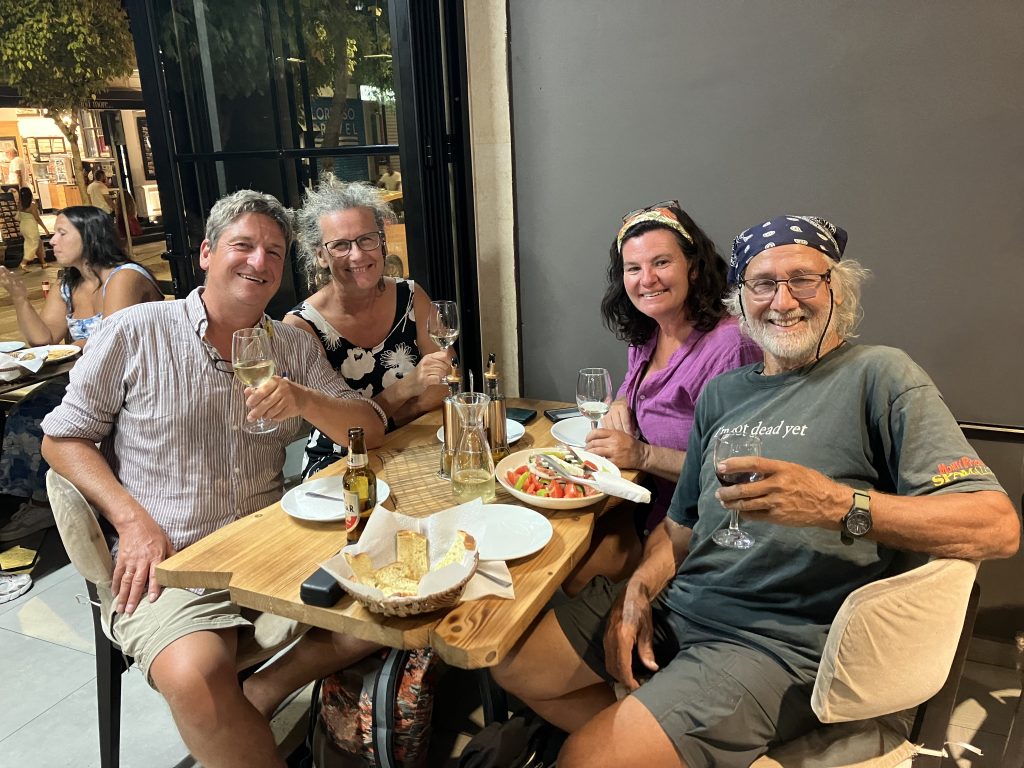
And yet it may have been fate that kept us there. On the day before we were prepared to leave, as Johan was taking me by his dinghy to load up more water, I saw s/v Balena at anchor. We had met Gerret and Katrin two years earlier in Block Island, and joked that we had been chasing them across the Atlantic and throughout the Med for those two years. They were on their way to Italy to meet up with their son, but had dropped anchor in Sarande for a few days and we had a lovely catch up over dinner,
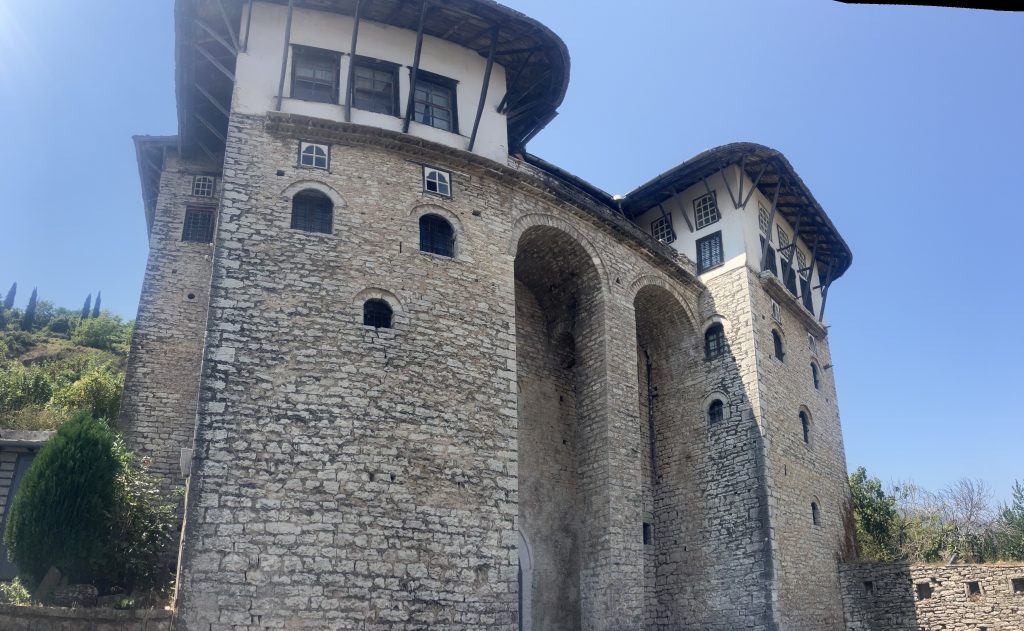
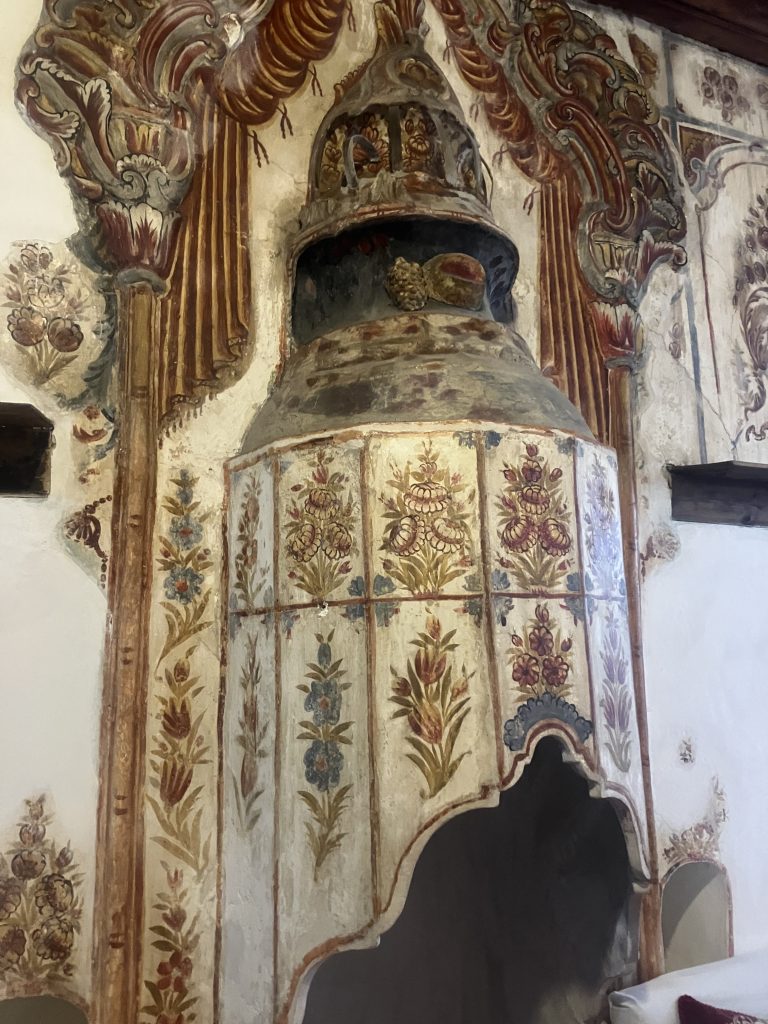
Gjirokaster was such an incredible city, we decided it really needed more time to explore. We took the bus directly one morning and gave ourselves the entire day there. The first stop was the Zekate house, one of the prime examples of the Ottoman fortress houses built into the hills during Ali Pasha’s rule in the 1900’s. This house was owned by one of the chief administrators and served as a four story fortress to ward off intruders, perched on top of the hill so the owner could survey his holdings, and featuring the most intricately decorated receiving room for important business guests.
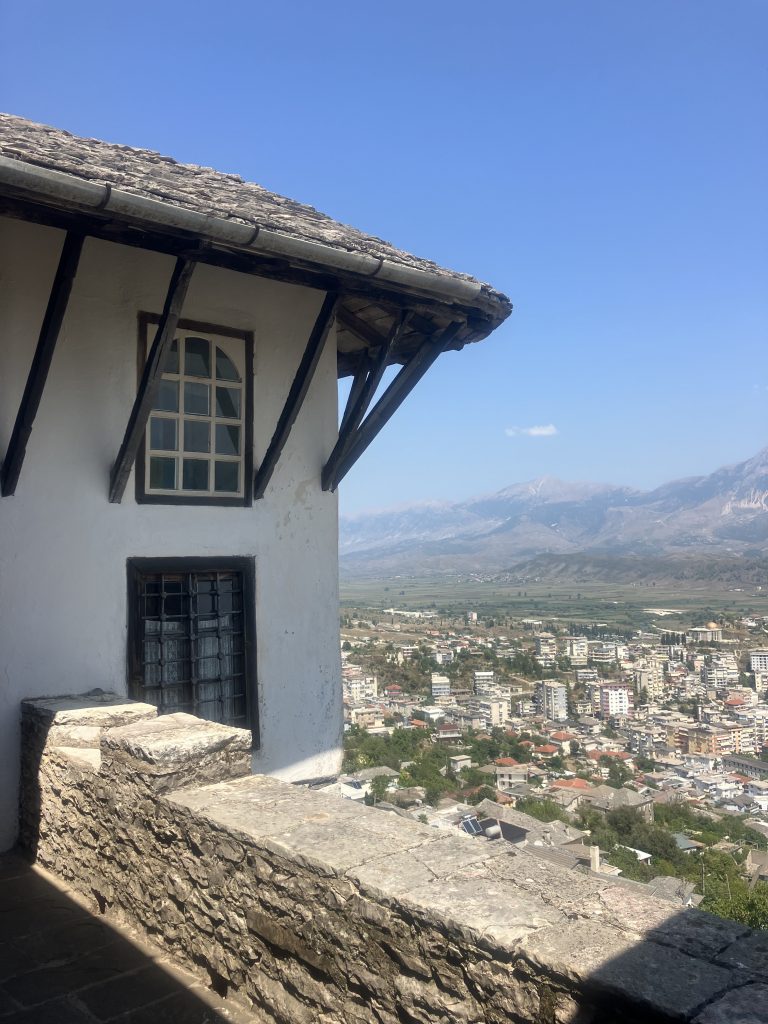
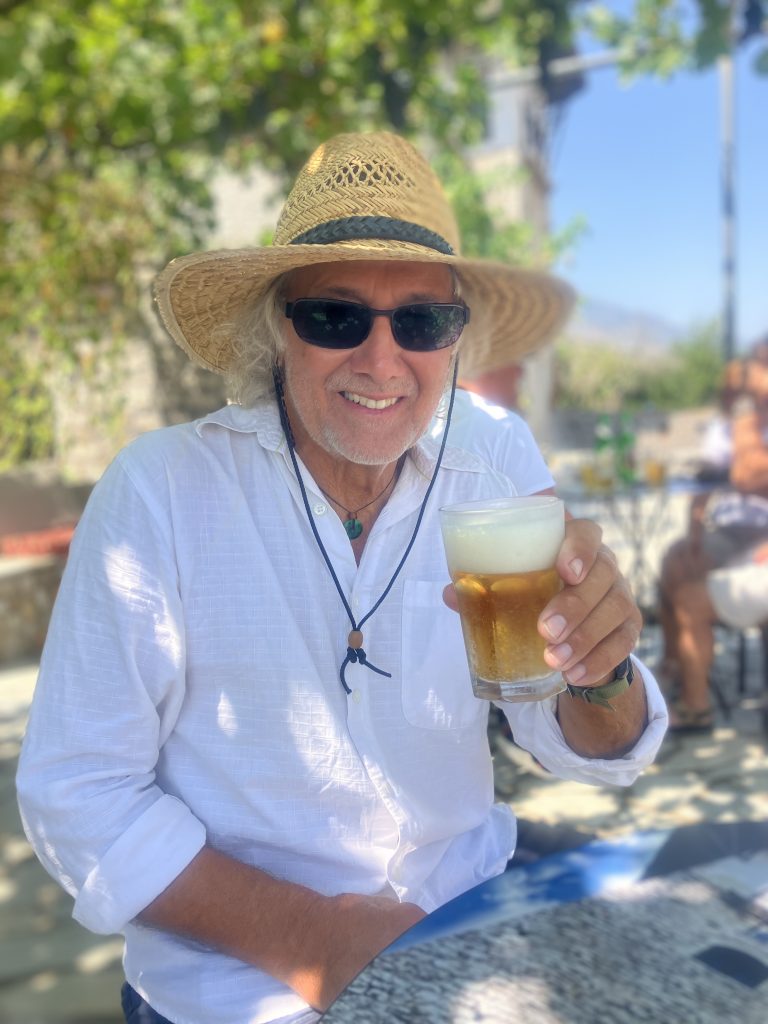
After touring the house we walked back to the castle, admiring the town architecture from up high in the hills. One of the most noticeable things were the stone roofs. Made from slate in the local hills, these roofs were developed by local masons, weigh thousands of pounds, yet manage to last centuries, despite earthquakes and other natural disasters.
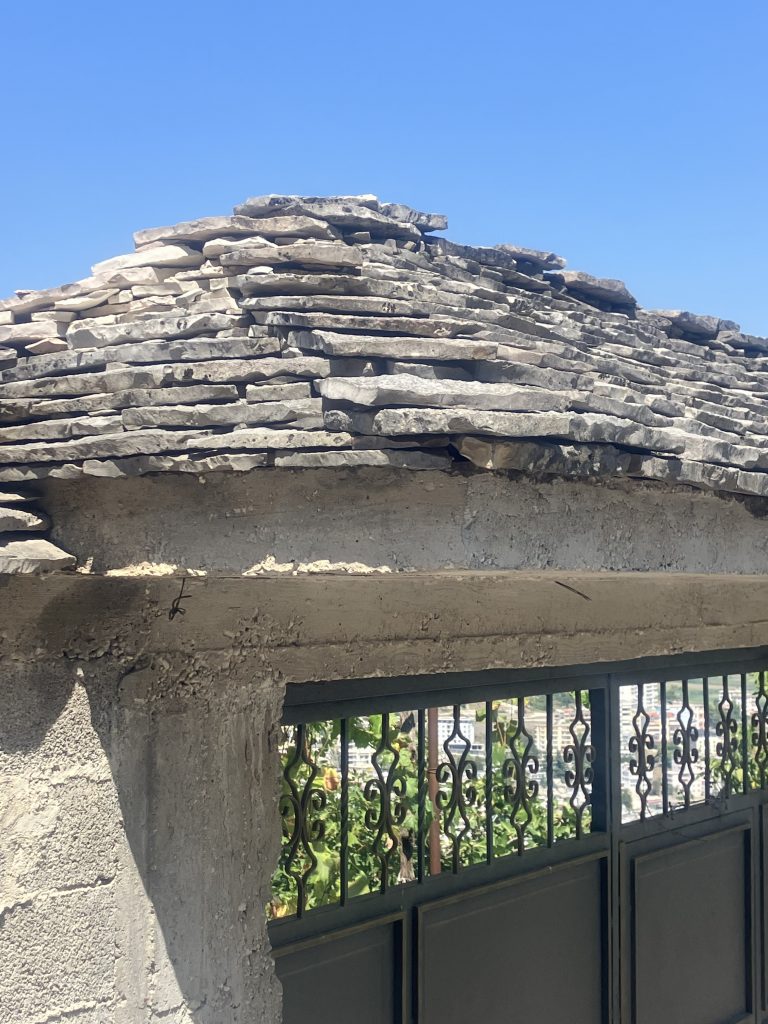
The castle was just as incredible a visit the second time. Having toured the external perimeter earlier, we headed straight to the museums this time. The curators give a very objective description of the brutal history that Albania has experienced. In particular the exhibits do not shy away from the fact that the castle was used as a prison, a particularly brutal one at that point in recent history (1930s through the 1960s). The walls of the former prison bear inscriptions of those who were imprisoned there.
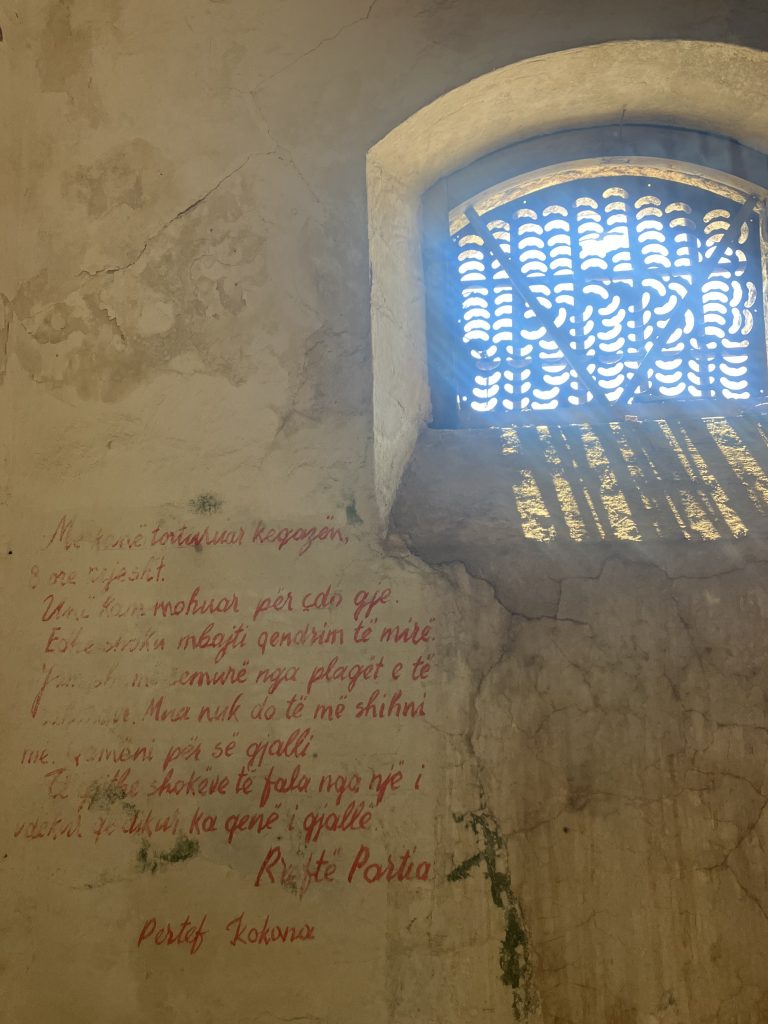
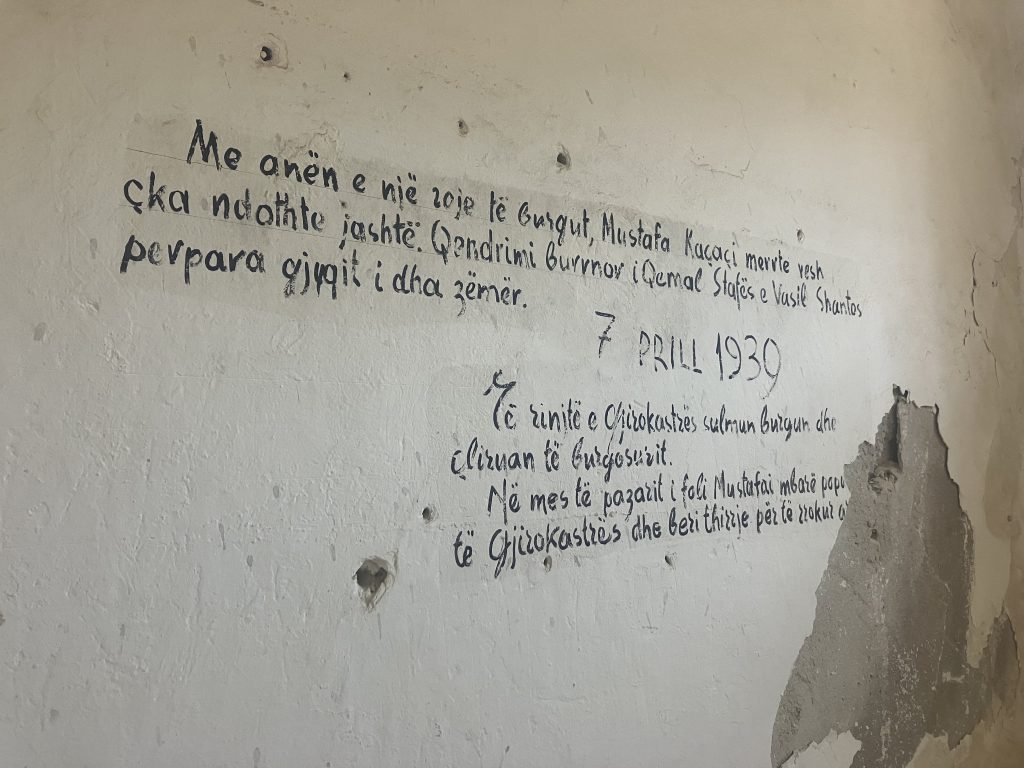
We then headed back down to the old town. During our first visit, I had admired the rugs available at the local shops. Trip dutifully took measurements of the two places left on the boat that warranted a rug. Unfortunately everything we looked at was the wrong dimension and generally much too big. A local shop owner asked what we wanted and pointed us across the street to a shop that featured hand made artisan rugs. Not only were we able to get a rug that featured the Albanian doubled headed eagle (dual authority in secular and religious state matters), we got to learn about the iconic shop we were in. It had been a local pub decades earlier and featured a water well going several hundred feet down. The current owner, Alma, bought the space in 1991 when communism fell, and has maintained its traditional decor and sourced her goods from local artisans ever since.
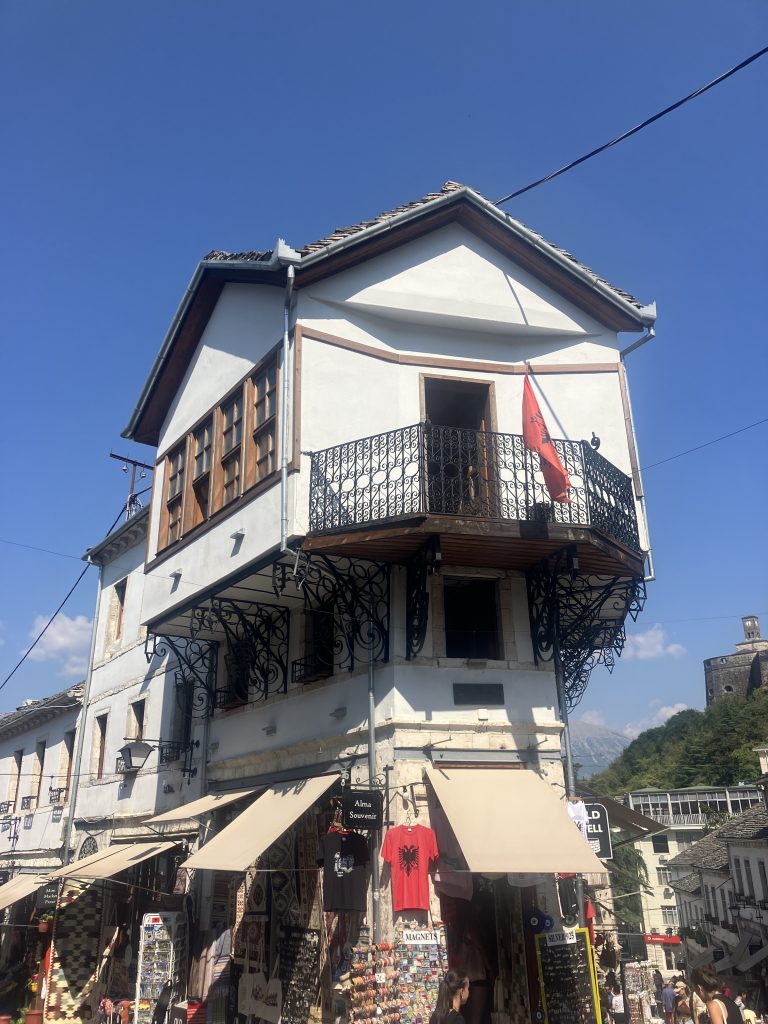
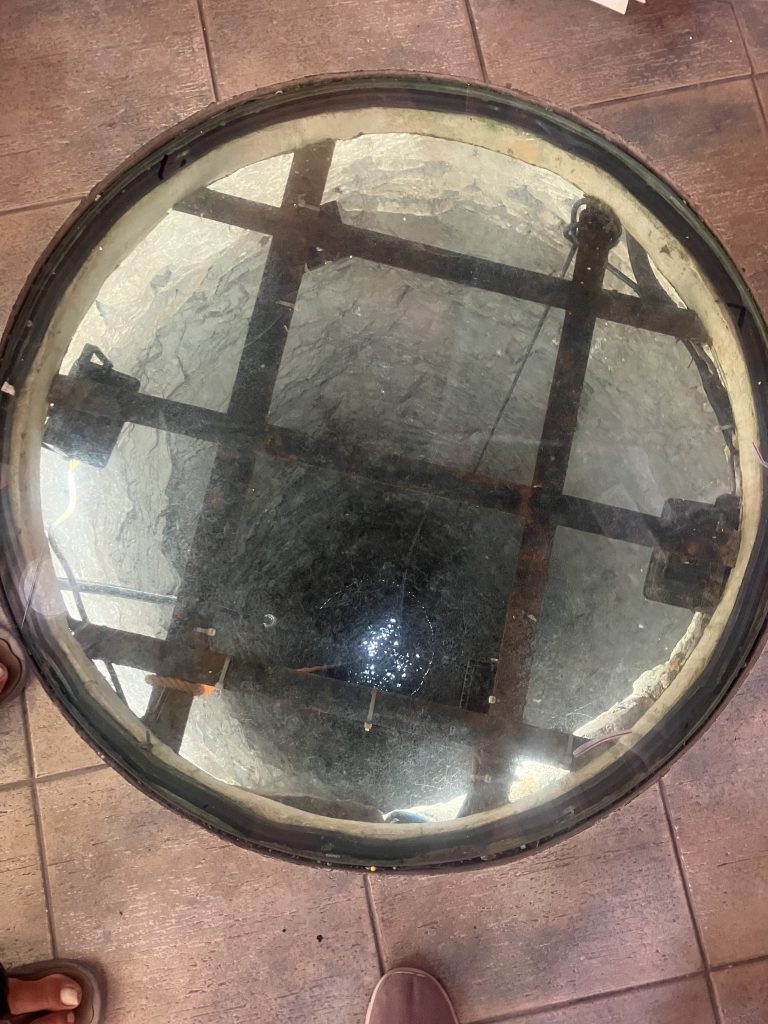
It was time for lunch, so we stopped in for a salad and a beer at a cute little restaurant with great retro decorations.
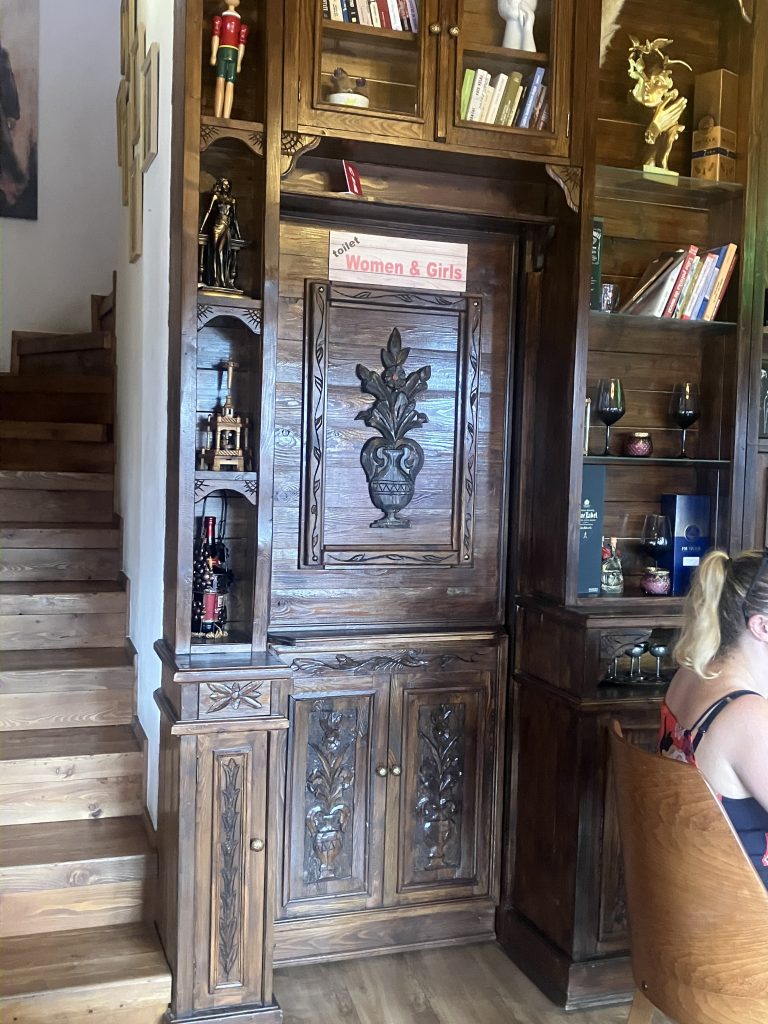
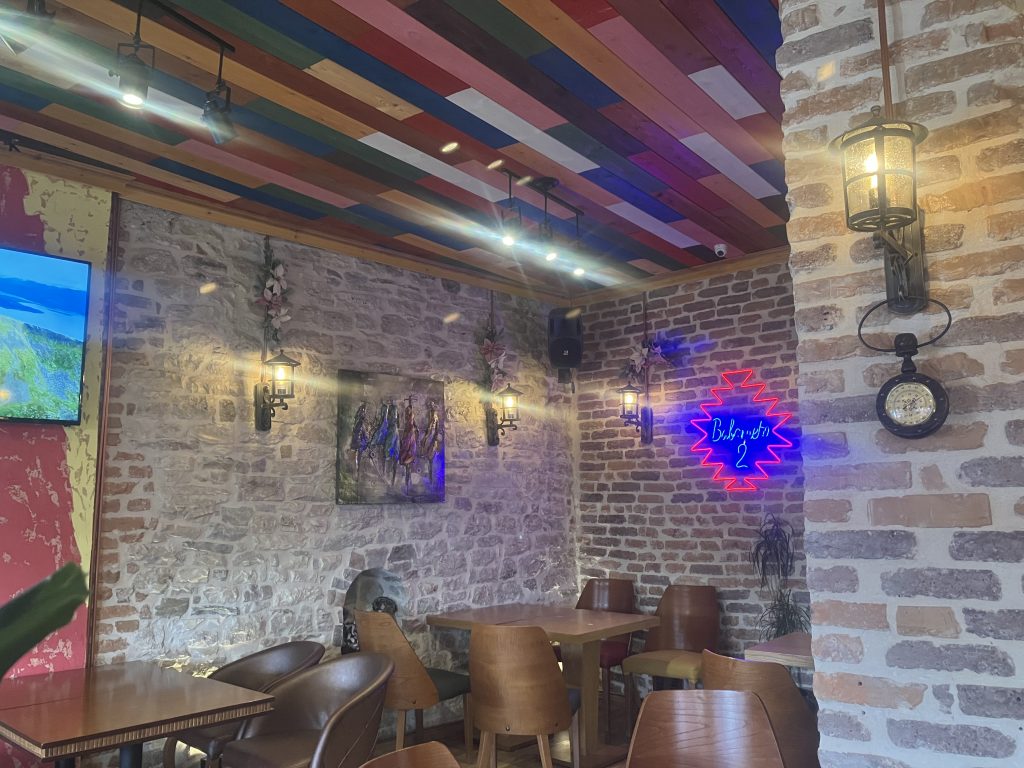
Our final stop in Gjirokaster were the Cold War tunnels. Albania’s infamous dictator, Enver Hoxha, had these constructed when he feared foreign attack, especially after the fallout with the Soviet Union. Built as an open secret in the 1970’s, the bunkers have 59 rooms that were to be used to house military and government functions in the case of a military attack. The interior was looted or destroyed in the 1990s, but the tunnels are left to explore with a guide. Locals talk cynically about the cost to build and maintain the tunnel, which was never used, in a time when most of the local population was starving.
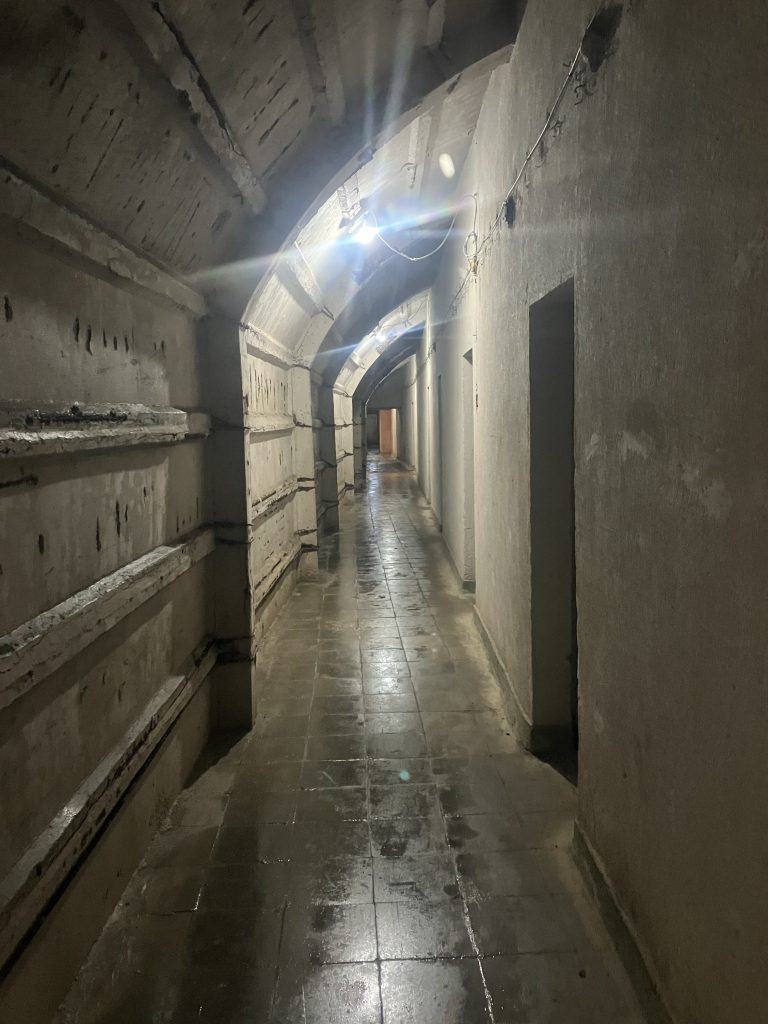
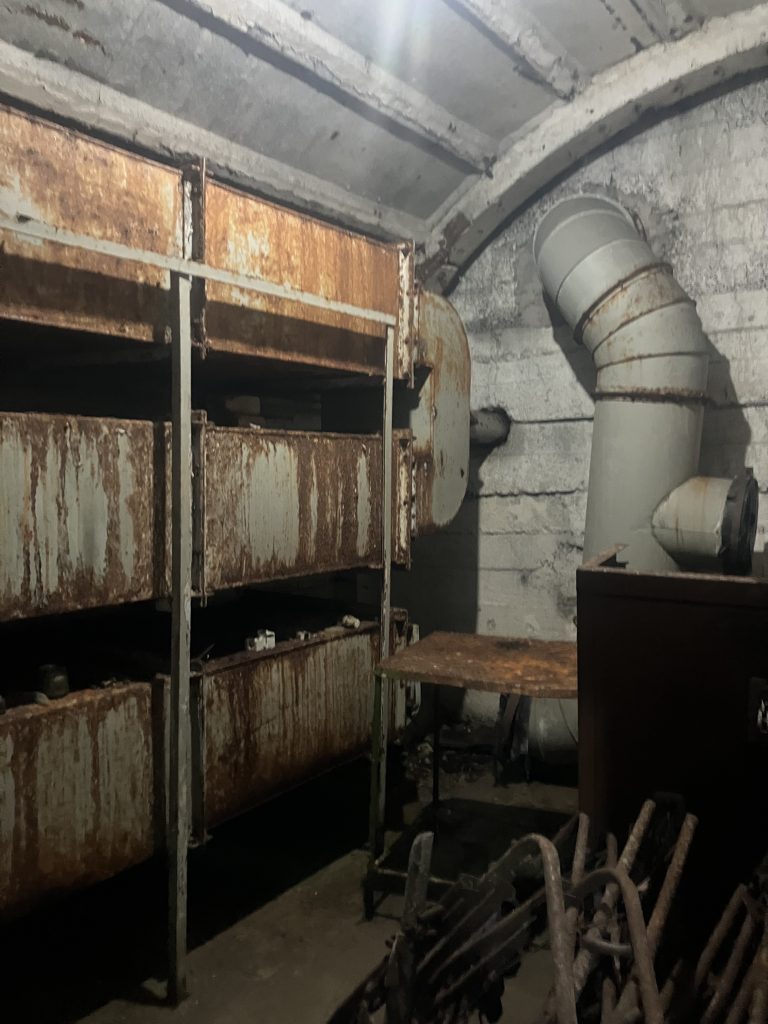
We had to race to catch the last bus of the day back to Sarande, and we felt like we could have stayed another day or two, but we had gotten a little bit deeper into one of Albania’s historic towns.
© 2024 Kalyra
Theme by Anders Noren — Up ↑
Recent Comments